Our Blog - Bordeaux June 2017 Blog - Friday (Day 1)
Similar to our trip to Albi last month, we took the train out of Gare Matabiau, which is a short walk from our apartment. We were on the TGV 8510, which headed to Bordeaux (not at TGV speed) and then went from there to Paris. There are petitions here to get a TGV from here to Paris since right now, the train from here to Paris takes almost 6 hours if you go through Bordeaux or 7 and change if you don't. It will go down to about 4 1/2 hours in July when they upgrade the speed between Bordeaux and Paris so that that part of the trip only takes 2 hours. When we arrived, we took Tram C from the train station to within a block of our hotel.
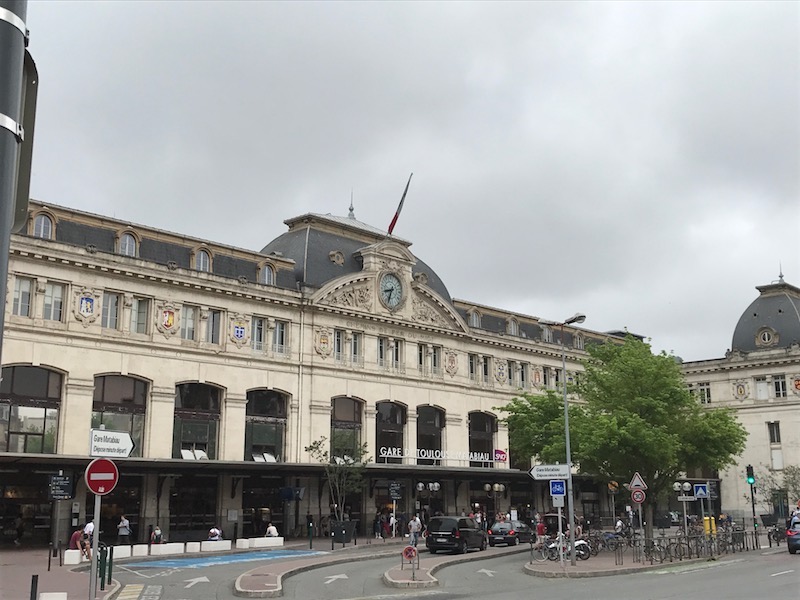
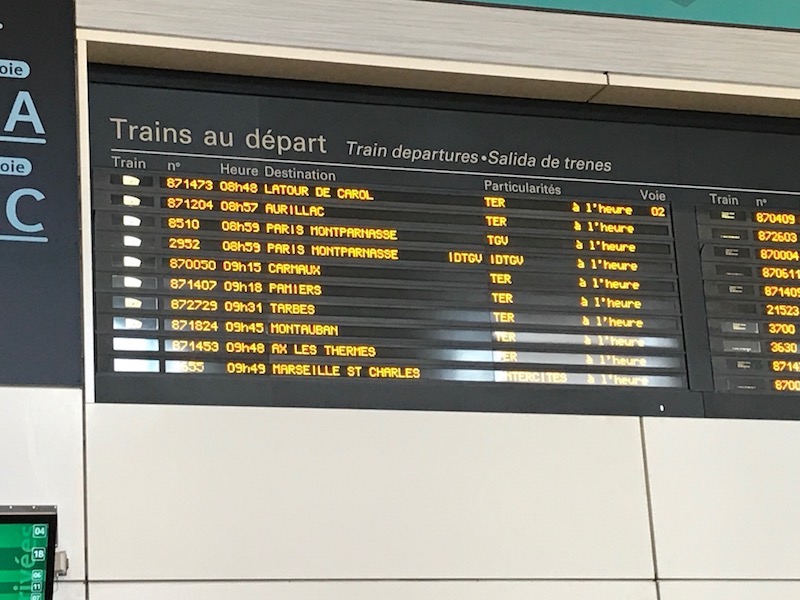
We continued our normal "requirements" for hotels, which mean that they are normally 3 star running around 100 euros per night, but the key is location, location, location. This one was no different, being RIGHT in the middle of the city at Place de la Comedie. Here you can see the name, Quatre Soeurs (4 sisters). The Tourist Office is next door, there is a cafe right there, where you can get breakfast, coffee, or wine (among other things) and then you can see the Restaurant l'Entrecote next door .. this is a quite famous chain. They don't take reservations and people line up to get in, almost every day. There was one near our apartment in Paris, and another one just down the street from our apartment in Toulouse. The room itself was quite nice and (as expected) the typical small European room. It actually did have a really nice set of built-in shelves and place to hang clothes. Then a few pictures of just the view from the front of the hotel into the Place de la Comedie (we'll cover this area in more detail later).
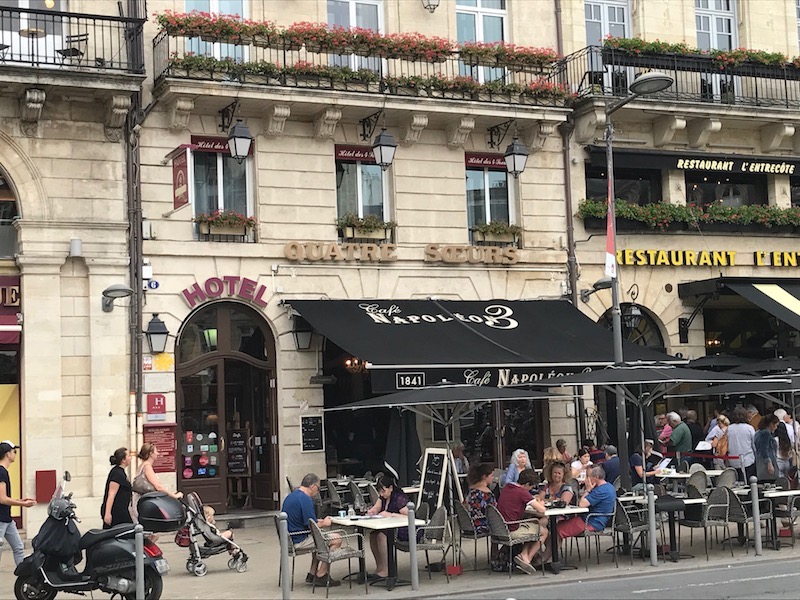
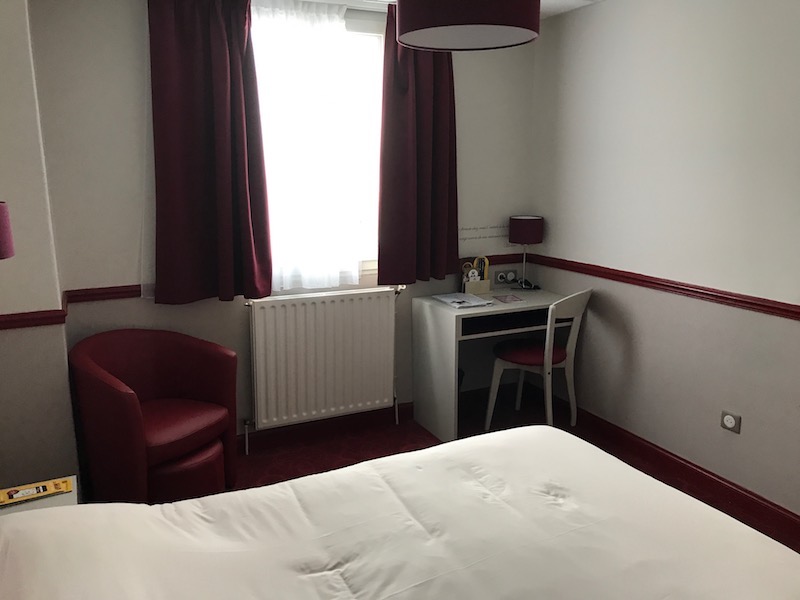
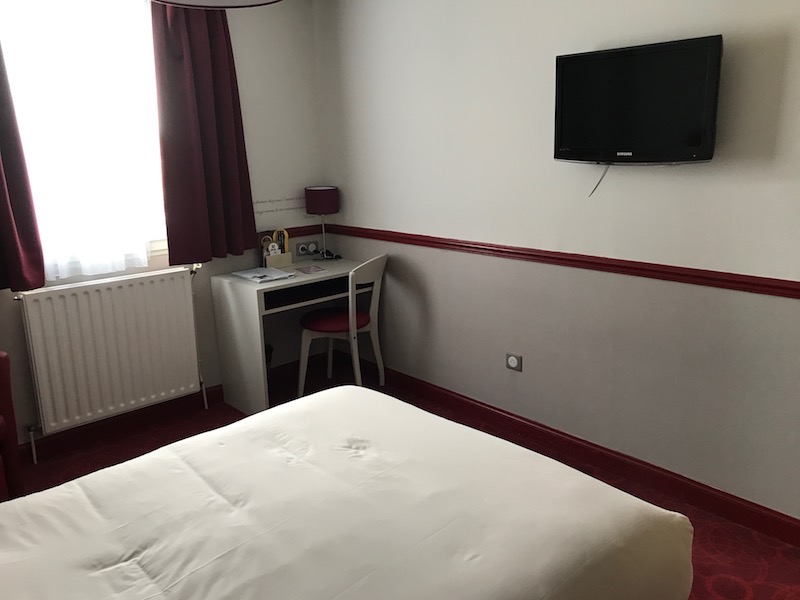

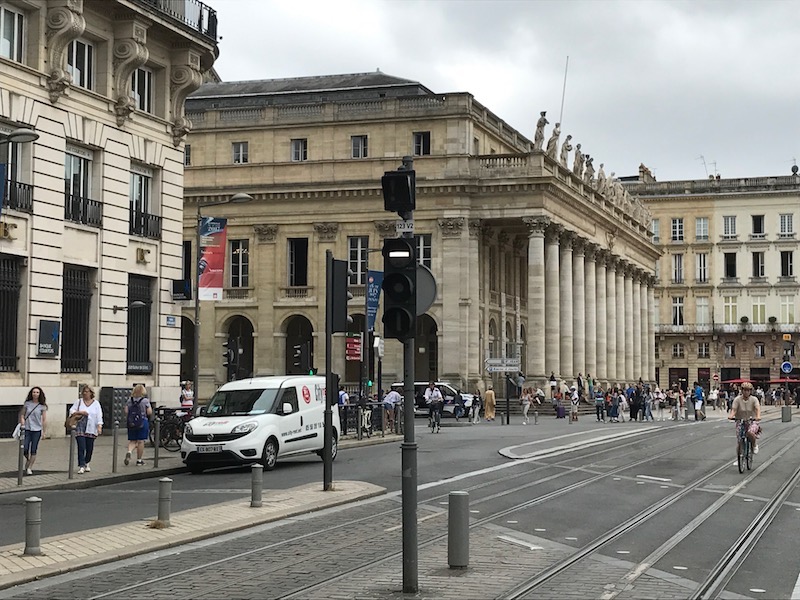
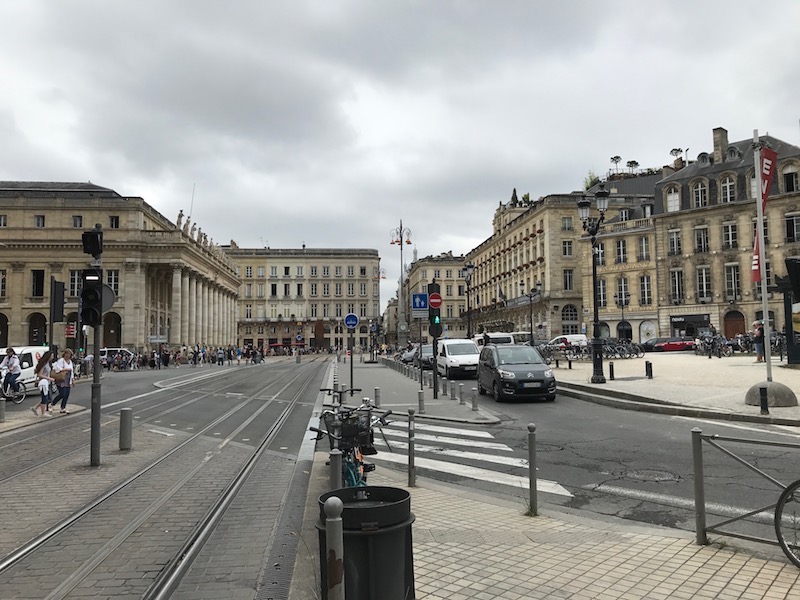

One of the first things we did was walk around looking for a nice place for lunch. We didn't have any place in particular, and so we were looking on a map of the city that we had picked up from the Tourist Office. One of the places a couple blocks from the hotel, called "Le Fils a Maman", was listed so we decided to try it. It was an interesting little place with stone walls decorated with TONS and TONS of kids toys and pictures. And of course, Tom had to grab a picture of the puppy who was outside, looking in at us. We took a minute and petted him on the way out. Tom went for steak frites, this one with a Bavette, while I also had a very typical French dish of Cordon Bleu along with mashed potatoes.

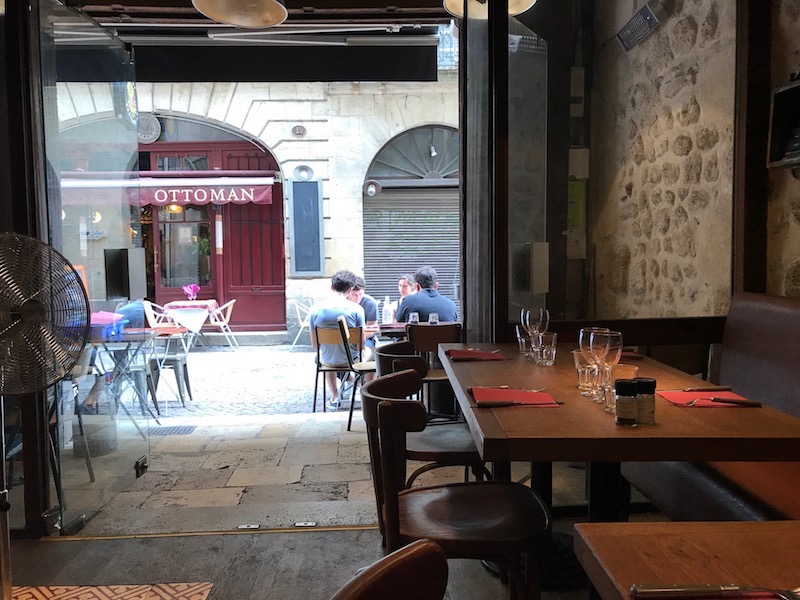
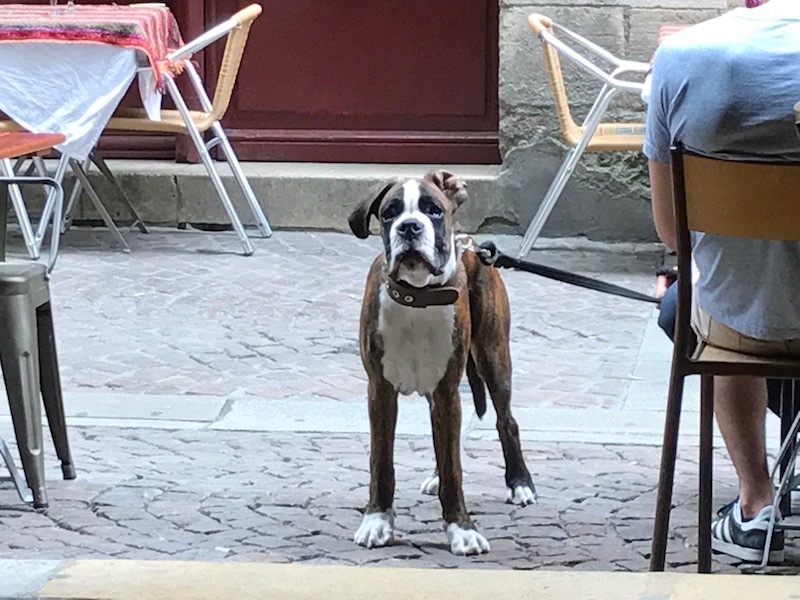

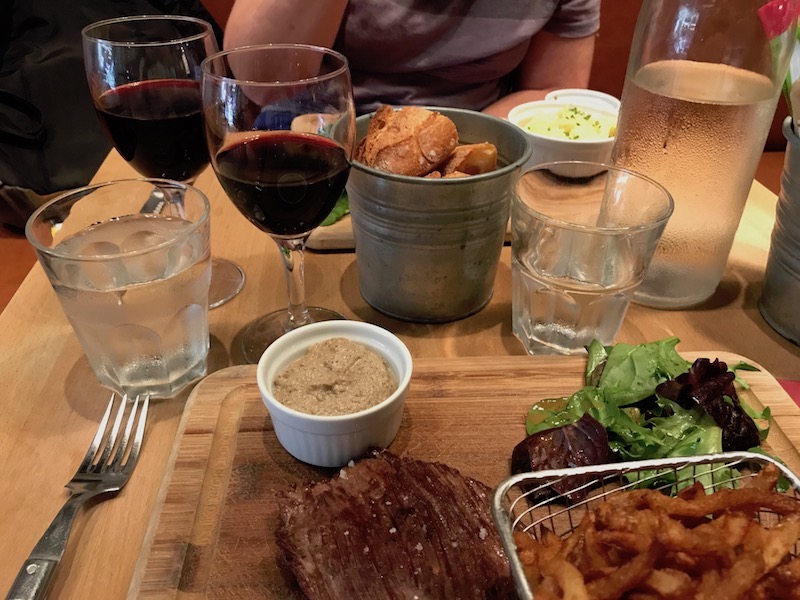

After lunch, we headed over to the Monument to the Girondins, which is at Place des Quinconces where we got off the tram (so, very close!). We did a wine tasting tour, which included 4 tastes of wine in various places along with a walking tour around the historical part of the city. During the tastings, we were taught various things about wine and how to do a proper tasting. The various things we saw on the tour are presented below (down to dinner), although we might also see them again in some cases in Sunday's blog.
There was a concert there on Wednesday so the place itself was all blocked off and they doing some work in it. Place des Quinconces is one of the larges city squares in Europe, covering 31 acres. It was created in 1820 on what used to be the site of the Chateau Trompette (it was destroyed in 1818 to make the Place). This castle was built shortly after Charles VII of France won the Battle of Castillon and the city of Bordeaux passed from England back to France. Many of the residents were not all that happy with the French taking over and so the French King wanted to be able to have control over the city and its' inhabitants. The name comes from the word Quincunx, which is the geometric pattern consisting of 5 points arranged in a cross (think of the way the 5 looks on a set of dice), and is the way the trees were planted. At the far end, on the river side, are 2 tall columns which were added in 1829. One symbolizes commerce and the other stands for navigation.
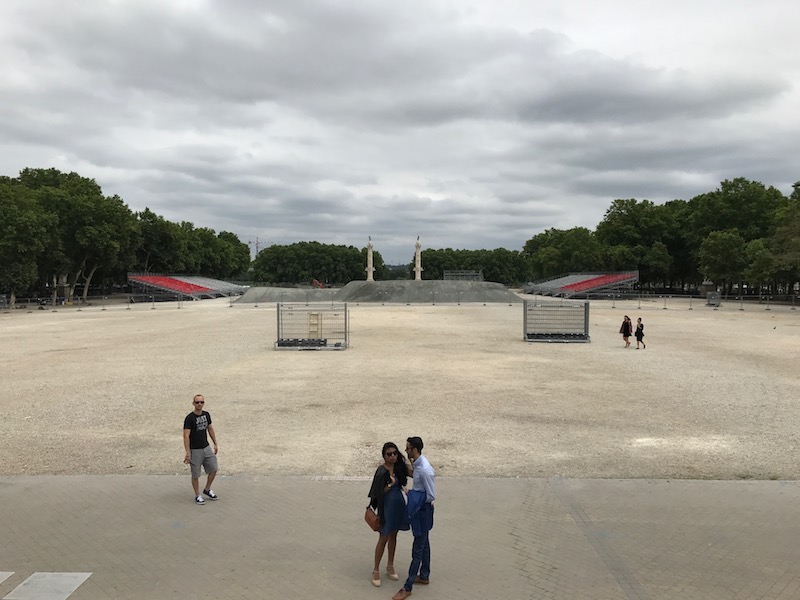
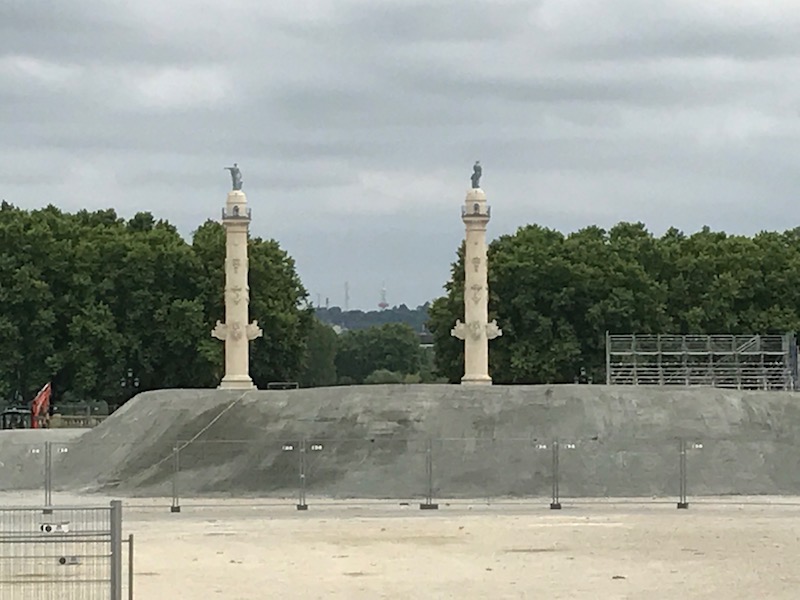
Opposite from these two columns is the massive Monument to the Girondin, which is made up of a single tall column topped by a statue, the Girondins monument itself (that the column sits on top of), and then two fountains. This monument was erected between 1894 and 1902, in memory of the Girondists who fell victim of the Reign of Terror during the French Revolution.
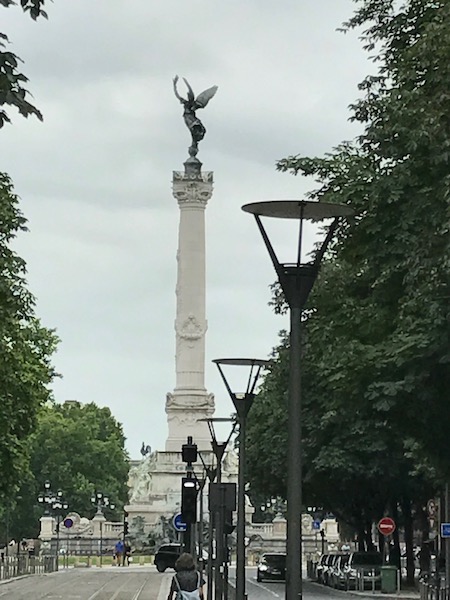


At the top is a winged lady made out of bronze that symbolizes freedom: note the broken chain in her right hand.

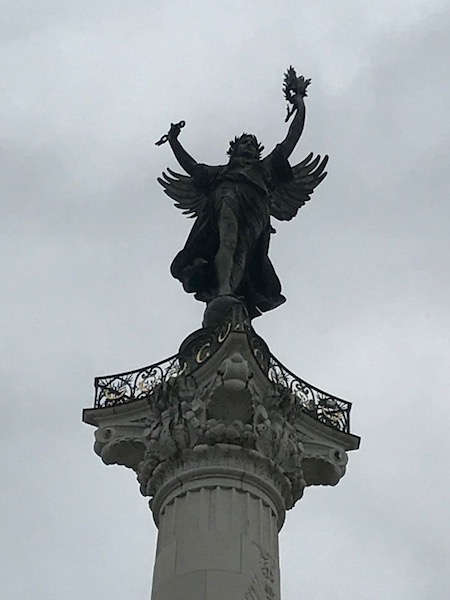
Then the column, which is dedicated to the memory of the Girondins, who were a loosely knit political faction during the French Revolution who campaigned for the end of the monarchy. The insurrection between the 31st of May and 2nd of June in 1793 brought about their demise and mass execution during the Reign of Terror. The Gallic rooster, or Coq, that you see is one of the unofficial symbols of France.

The base is framed on 2 sides by large basins with fountains. The fountains both have horses pulling a chariot with a woman representing Liberty. This basin, which points towards the Grand Theater. At the foot of the chariots of 4 horses are figures of men which represent ignorance, deceit and vices.
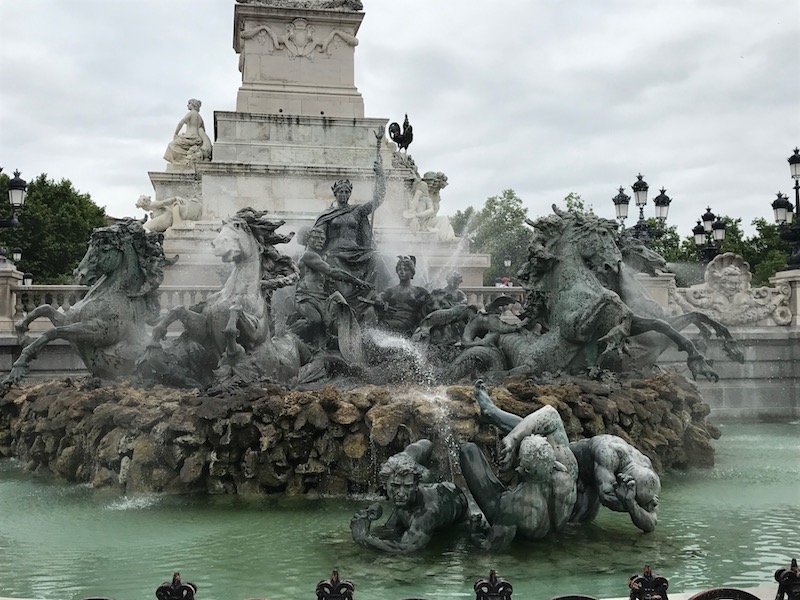
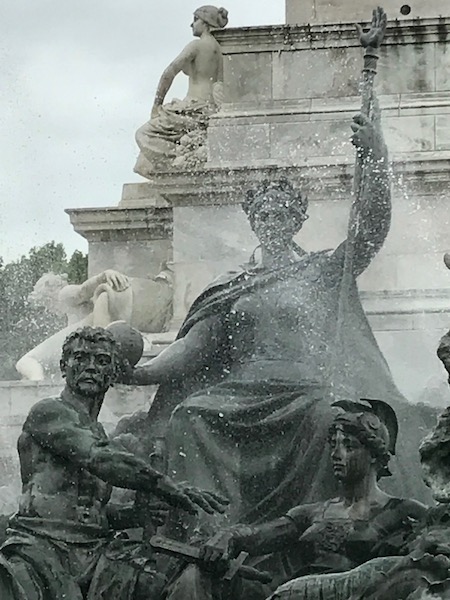
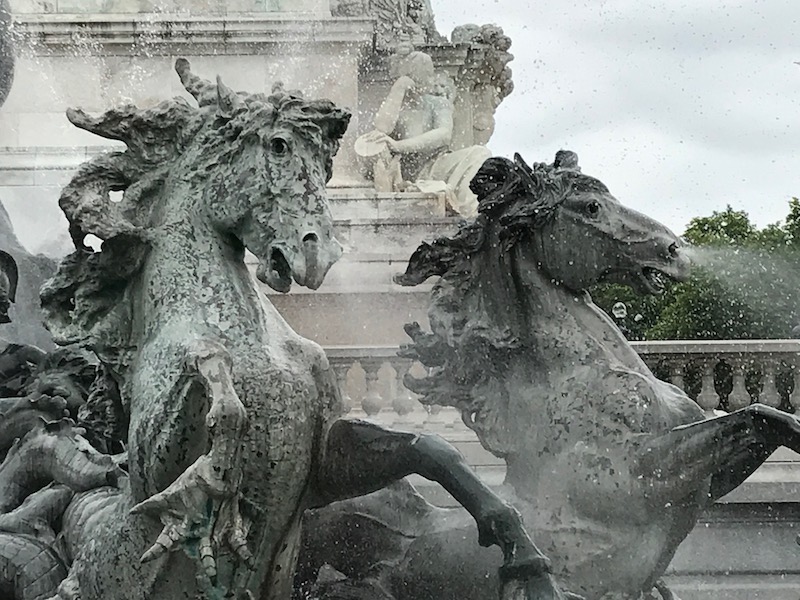

The other basin, also with the chariot with Liberty being pulled by four horses. In the front is a more joyous-looking set with a man, a woman, and a child riding a fish. An interesting piece of trivia ... during WWII, much of the monument disappeared from view and it was thought it had been melted down to be turned into weaponry. However, when the war was over, it was found in Angers (in central France) and returned to its original spot in 1986.
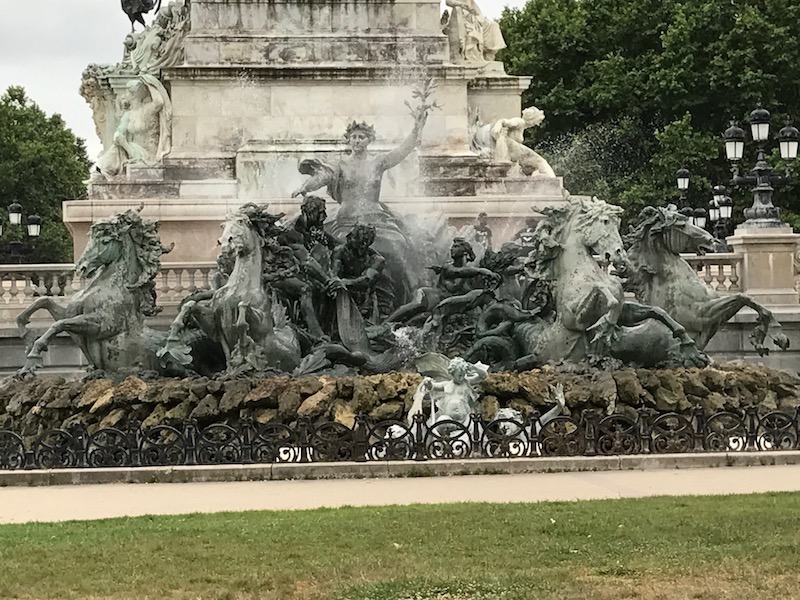
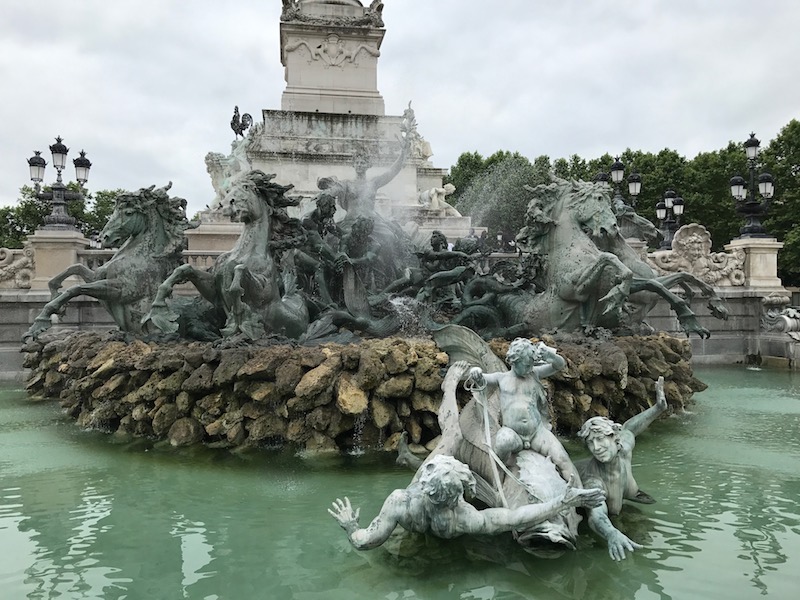
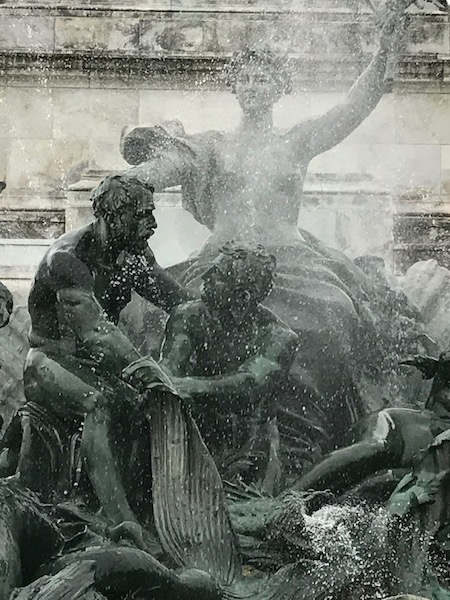
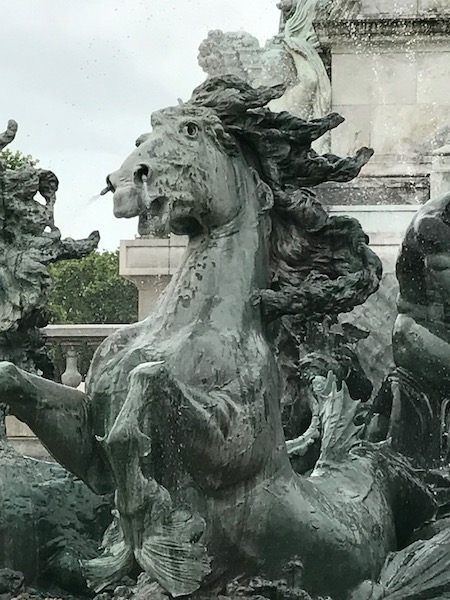
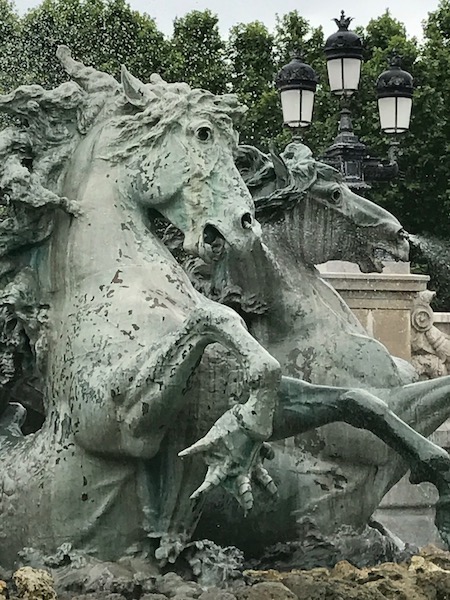
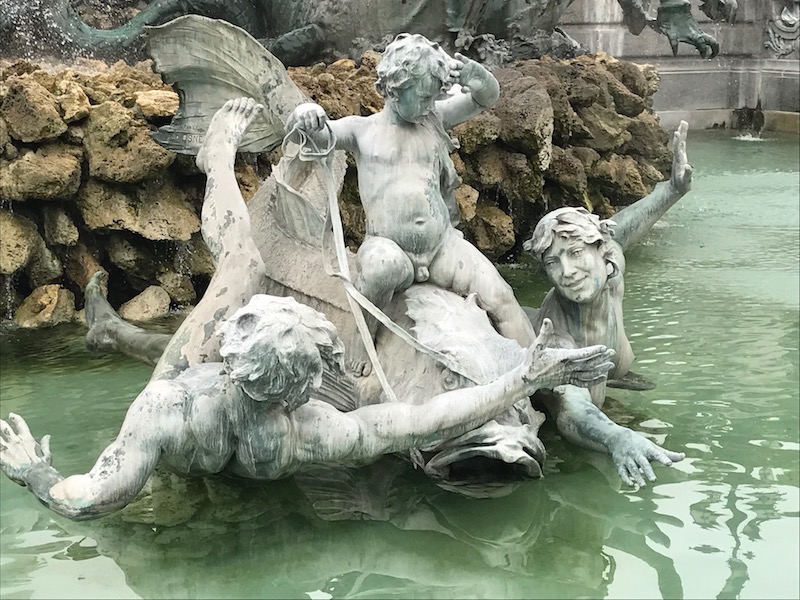
Around the city, you can see the Coat of Arms in various places. In this case, it is on a light pole (a very nice one!). Below the crown is the oval part, which contains the 4 parts of the Coat of Arms. At the top of the oval are a set of fleur de lys, which was the symbol of French royalty. Below that is a lion, a remnant of the years the city spent under British rule from 1154, when Eleanor of Aquitaine married Henry, Duke of Normandy (who became Henry II of England), until 1453 when the French took back the city. Then are fortifications which represent Porte Saint-Éloi, one of the main gates into historic Bordeaux, and its famous bell, la Grosse Cloche (you'll see it on Sunday's blog). At the bottom you can see water, which represents the Garonne, overlaid with a crescent, which represents the shape of the river as it flows through the city giving the city the nickname: le Port de la Lune (Port of the Moon). I've included a color version as well at the bottom so that you can see the sections clearly.
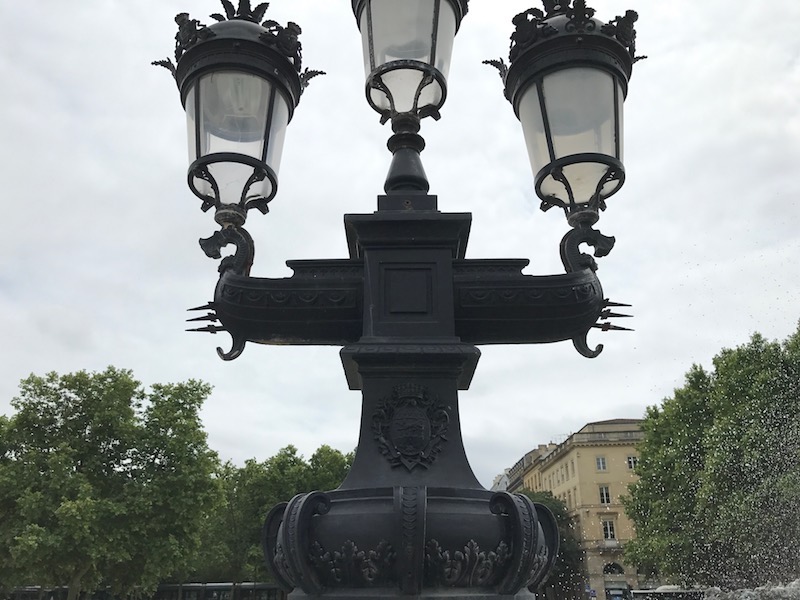
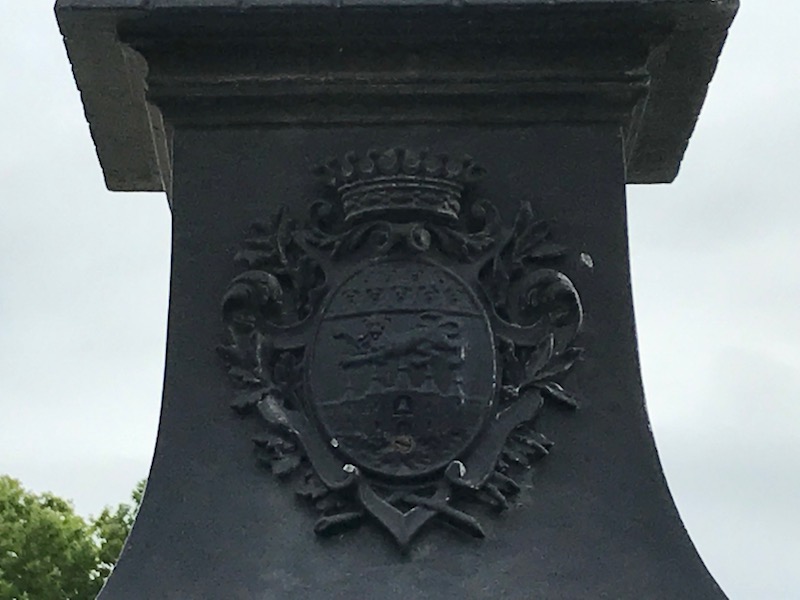
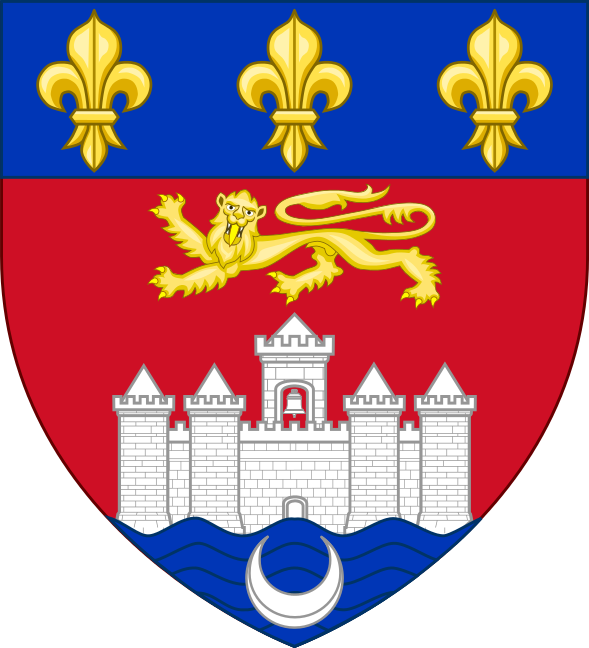
Place de la Comédie is a place where the main streets of Bordeaux converge, including the main shopping street of rue Sainte Catherine. One one side is the Grand Hotel of Bordeaux with a Gordon Ramsey restaurant (we didn't bother), and one the other is the magnificent Grand Theater, which was built between 1773 and 1780 by architect Victor Louis. The Neo-Classical façade has twelve corinthian columns supporting carved statues that represent the nine Muses and three goddesses (Juno, Venus and Minerva). You'll see the interior in Saturday's blog, when we do a tour inside.




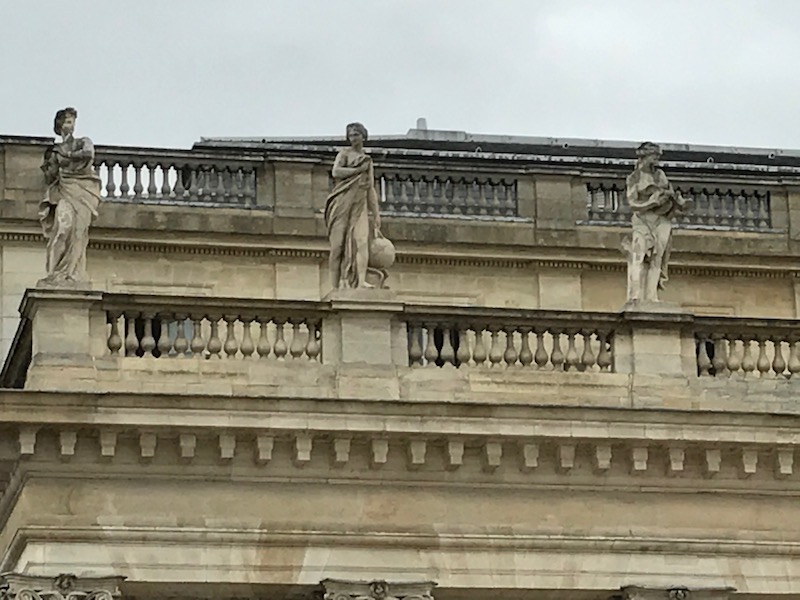
This is the Porte de Cailhau, which is one of the gates in the old medieval ramparts of the city. It was the main entry into the city from the Garonne river port. While there was an earlier version in the 14th century, this is the actual Gothic-Renaissance gate from the 15th century. On its facade, on the city side (with the more rounded entrance), you can see in the center a shield with fleur-de-lys worn by two angels. On the river side, with the Gothic (pointed) arch, are several statues: Charles VIII, Saint John (Saint-Jean in French) the Evangelist and Cardinal d'Epernay, archbishop of Bordeaux, who was with the king at the battle of Fornoue.
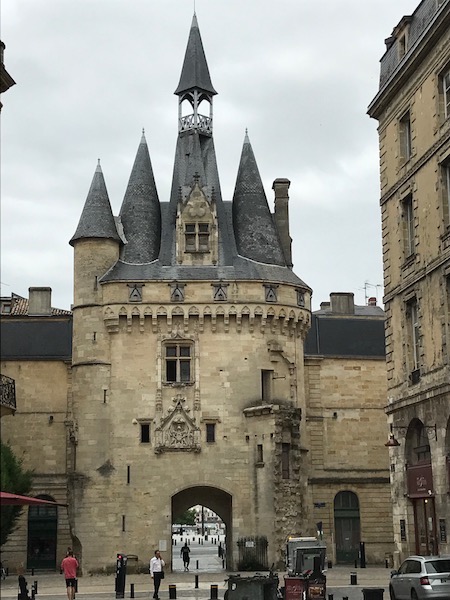

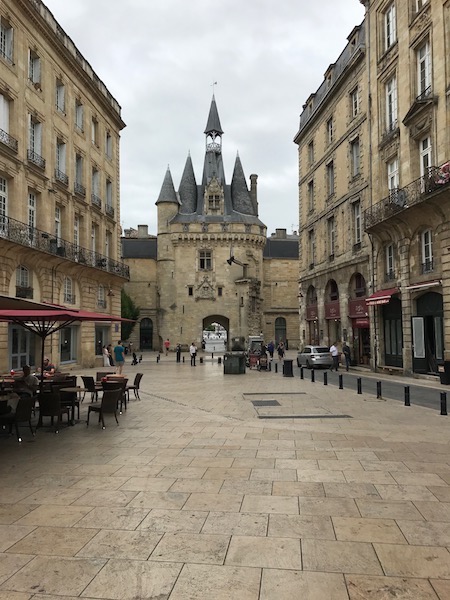



Place de la Bourse is one of the most recognizable sights of Bordeaux. It was built from 1730 to 1775 and designed by Ange-Jacques Gabriel. Originally, there was a statue of King Louis XV in the middle but it was destroyed during the French Revolution. In 1869, a new fountain was installed in the middle with the Three Graces. The buildings that surround the square were also designed by the architect but he died before they could be built. His son took over and finished the project. You can see the wet pavement ... which I'll explain later :-)


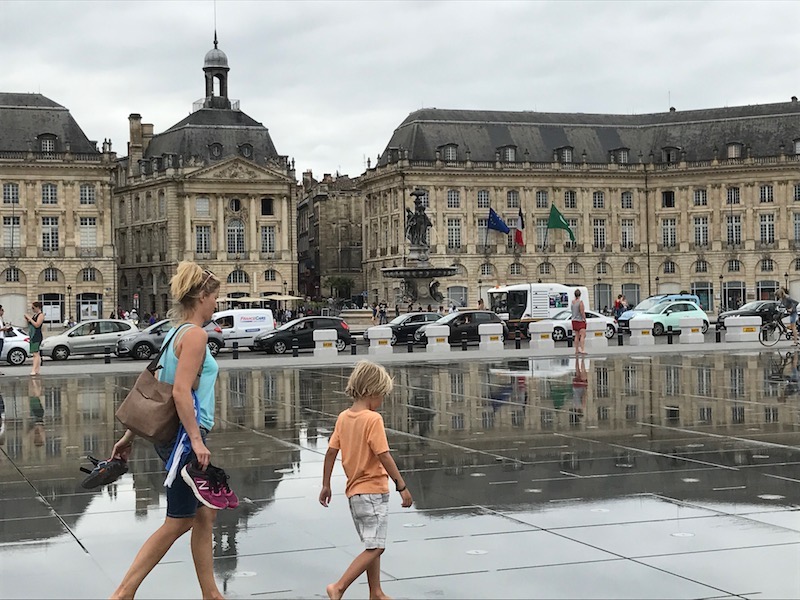
Within the city of Bordeaux, there are more than 3,000 mascarons dotting the facades of the buildings and fountains of the city. While many are more traditional with Neptune and Bacchus, there are also animals, female figures, faces of the carnival, angels, and wild animals. There are some that also reflect the history of the city with the reproduction of African faces in reference to the slave trade as well as religious symbols (Masonic, Christian or Jewish). I've captured just a few here .. you'll see more in each day's blog.

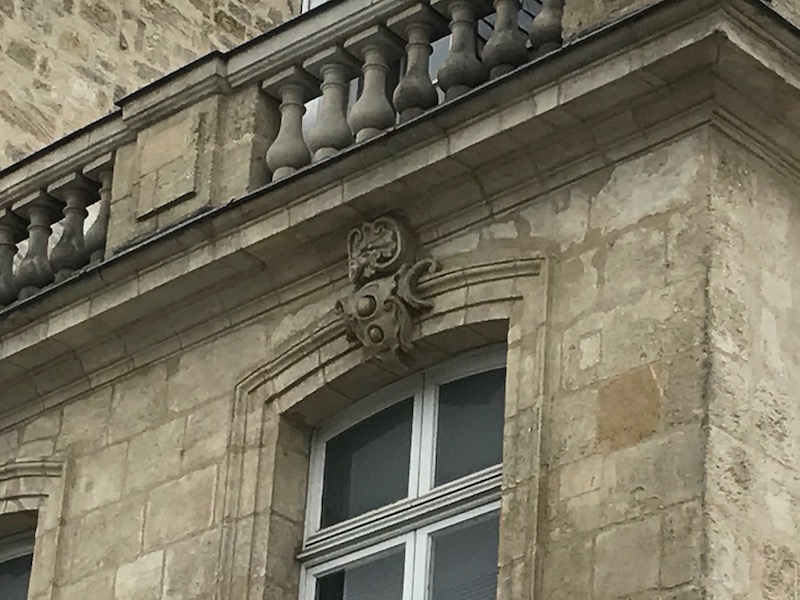

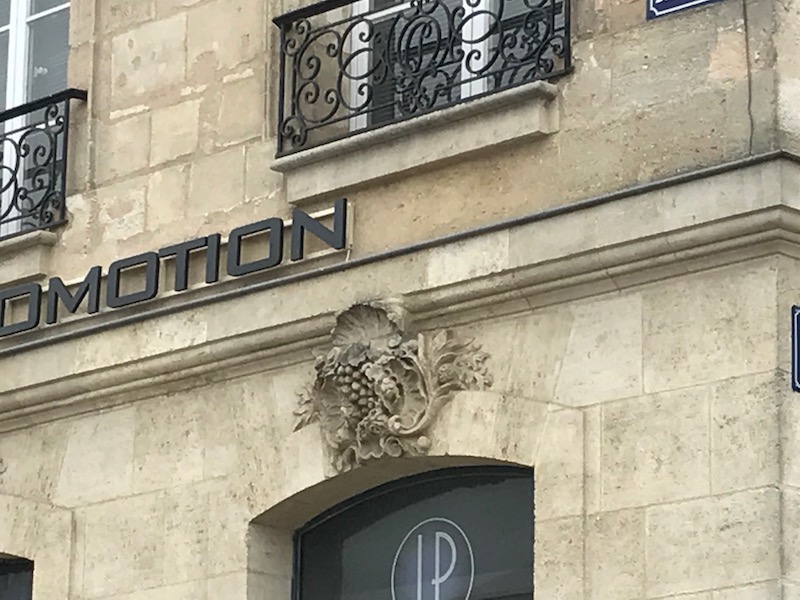
Palais Rohan, now houses the town hall of Bordeaux (Hotel de Ville) and the Musée des Beaux-Arts. It gets its' name from Archbishop Ferdinand Maximilien Mériadec de Rohan, who had it built as his palace in 1774.
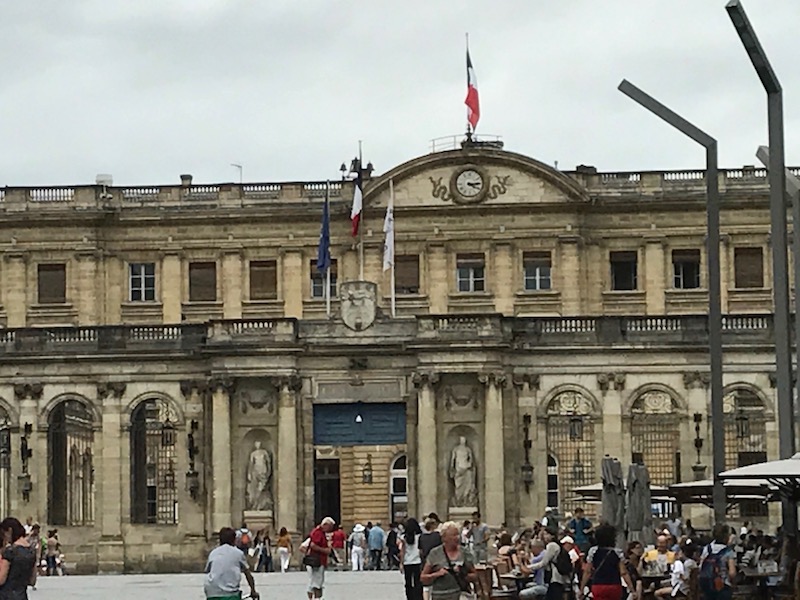

The Cathedral Saint-Andre (also called just the Bordeaux Cathedral) and the Pey-Berland Tower are across the Place from the Palais Rohan. The cathedral was consecrated by Pope Urban II in 1096. Of the original Romanesque edifice, only a wall in the nave remains. The Royal Gate is from the early 13th century, while the rest of the construction is mostly from the 14th-15th centuries. In this church in 1137, the 13-year-old Eleanor of Aquitaine married the future Louis VII, and became Queen of France. Mind you .. she eventually had that marriage annulled and she quickly married the Duke of Normandy (who was her 3rd cousin) in 1152. Two years later, in 1154, he became King Henry II of England. More on the Cathedral on Sunday.


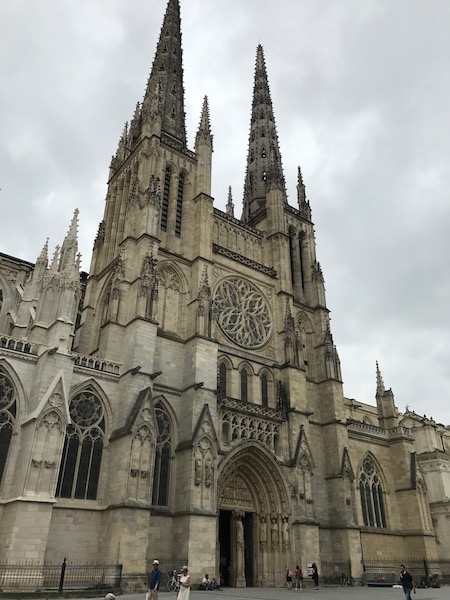
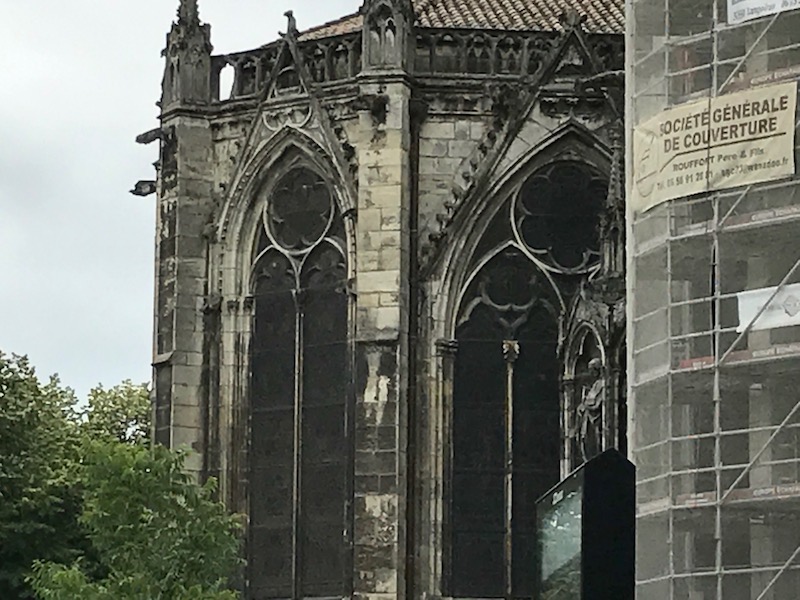


Next to the cathedral is it's bell tower, the Tour Pey-Berland. It is named for the bishop who had it built between 1440 and 1500. It was NOT attached to the cathedral, like you would have thought, because they believe that they needed to protect the Cathedral from the vibrations of the bells. After the completion, the church had initially no money for the purchase of bells, therefore the tower was used for housing until 1790. After 1790, a lead factory was set up in the tower. Bells were installed after 1851 and the tower began to be used for its original purpose. More on the Tower on Sunday.
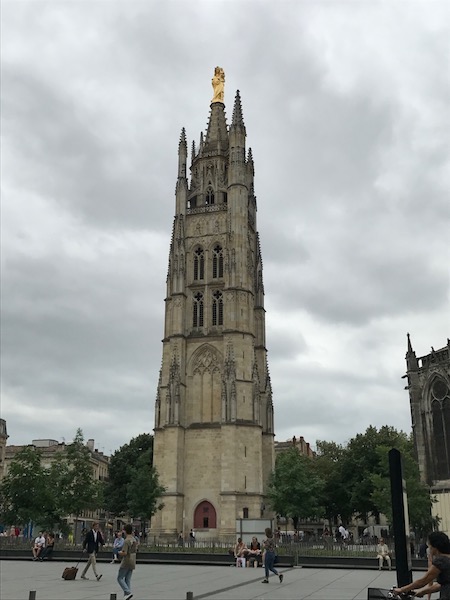
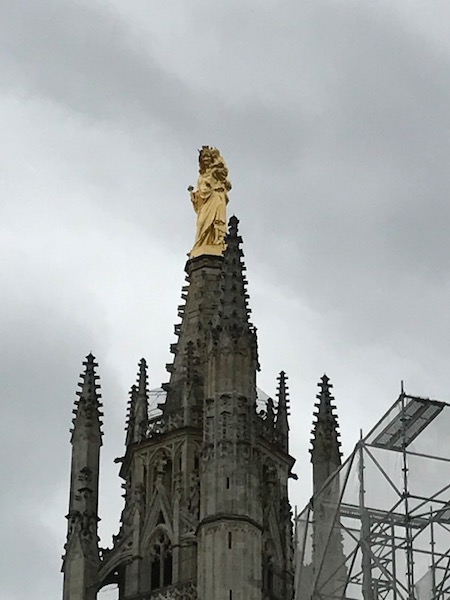
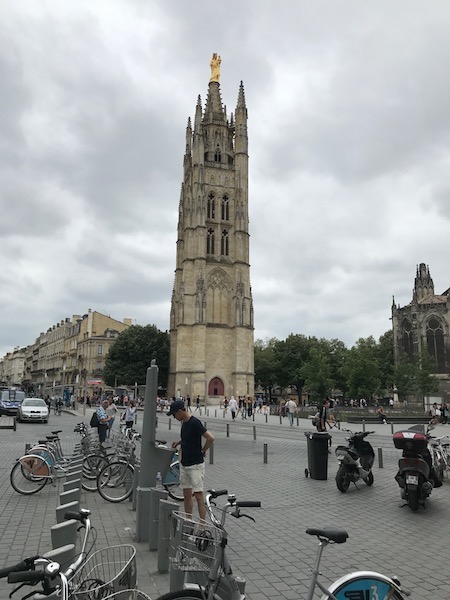

This gives a good sense of what the city could look like if all of the buildings were cleaned. Like Paris, it looks like every building, by law, must be cleaned every 10 years (although there can be some exceptions given). You also will see this same thing when we get to the Cathedral. Here are two buildings and you can see the black on the one on the left vs the one on the right (which actually doesn't look like it was really recently done either). Our guide was actually saying that some of the black is pollution ... which I would tend to agree with since it is more on the bottom and less as you go up, so that would be more from car exhaust (a lot of diesel's here) ... but also some of the darkening with a natural thing with the stones.
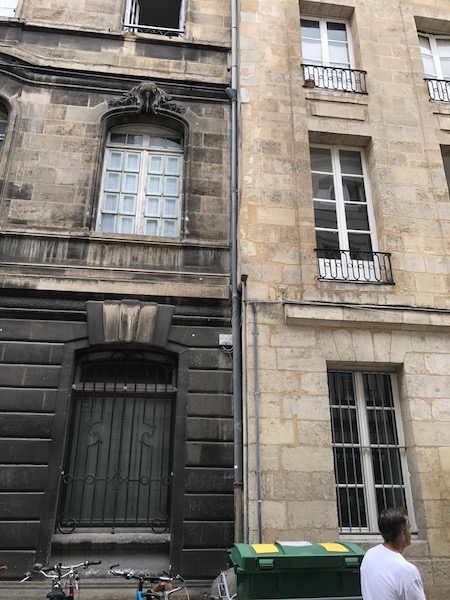
I had taken a couple of general architecture pictures ... the first showing the date that a given building was built ... 1900, and the second with just some general arched doorways with balconies above them, being held up by highly carved stonework. The 3rd and 4th pictures are of a building that have these really great carvings of a boat, a reference to the port and the importance of the river and shipping for commerce in the city. Throughout the city, you can also see places where names of buildings (or uses) and street names are carved into the stone.
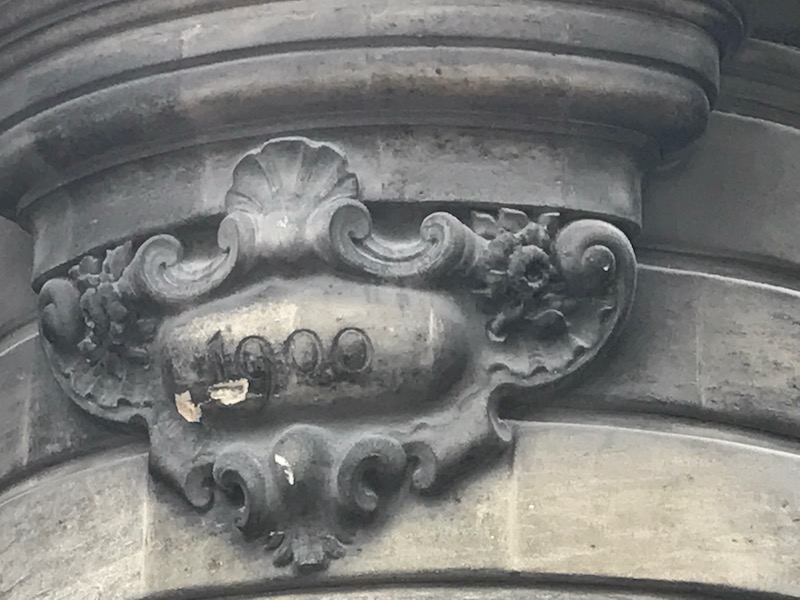
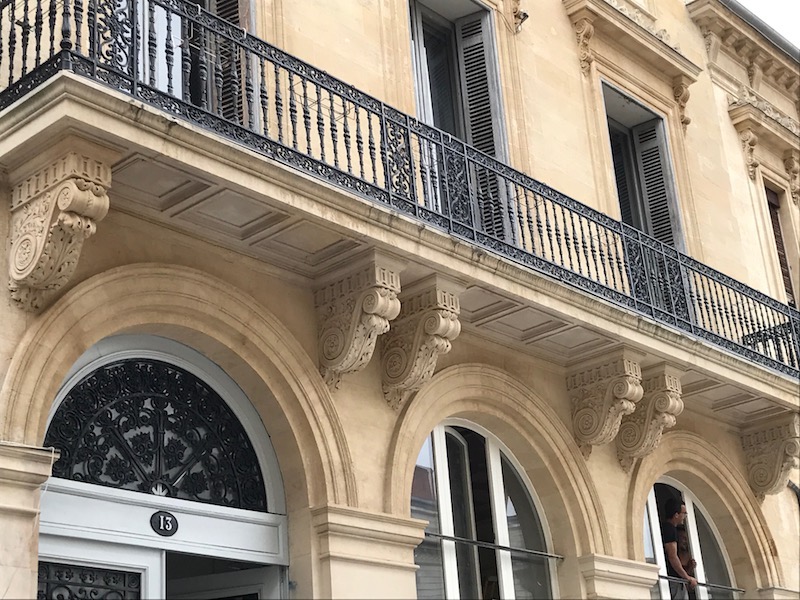

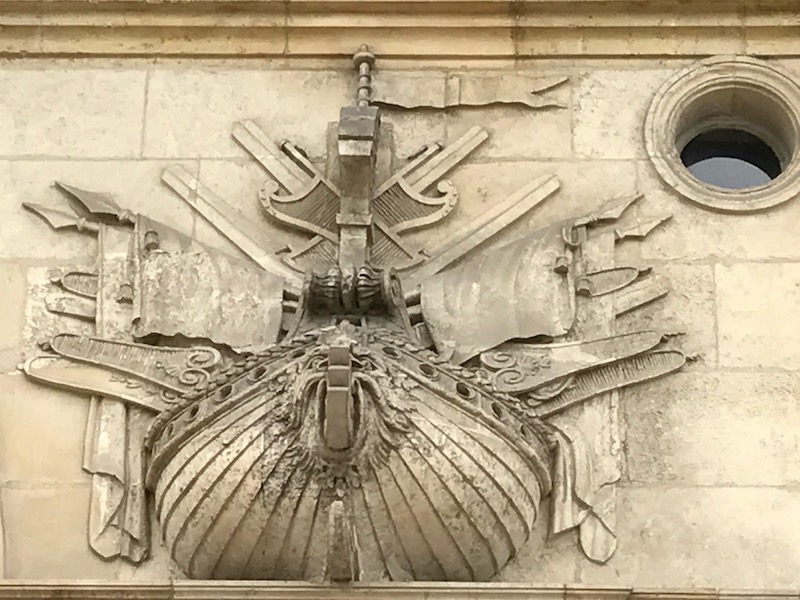

This is one of 16 bronze statues that are part of "Event Horizon" by Antony Gormley. The 6'2" sculptures are of the artist himself, naked, and are placed around the city. This has been in other places as well, including New York in 2010 and London in 2007. For example, in New York in 2010, they were perched on rooftops, stood on the grounds of Madison Square Park, and dotted the sidewalks around the Flatiron district. In Bordeaux, the 16 bronze statues are part of their "Paysages Bordeaux 2017" cultural season, which runs from the end of June to the end of October.

We took the Bordeaux Wine Tour through Les Ateliers de Bacchus. Our guide, Romane, explained the various wine regions around Bordeaux (like Entre Deux Megs, Saint-Emilion, Medoc) and we were able to taste 4 different wines in 4 different locations, intermixed with the various sights of the city. I took pictures of 2 of the labels (didn't get the other 2). She also was nice enough to take a picture of the two of us together, enjoying a nice red.
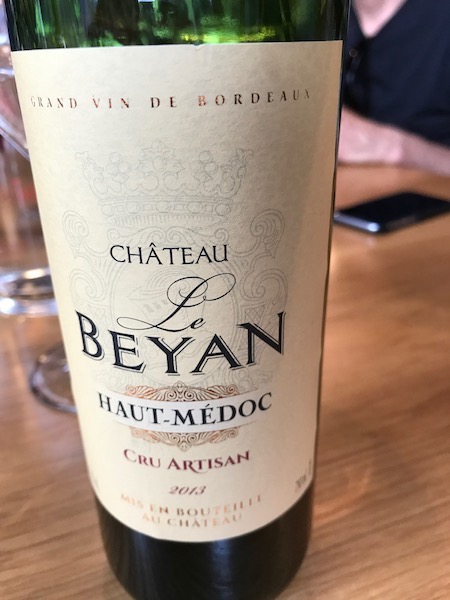
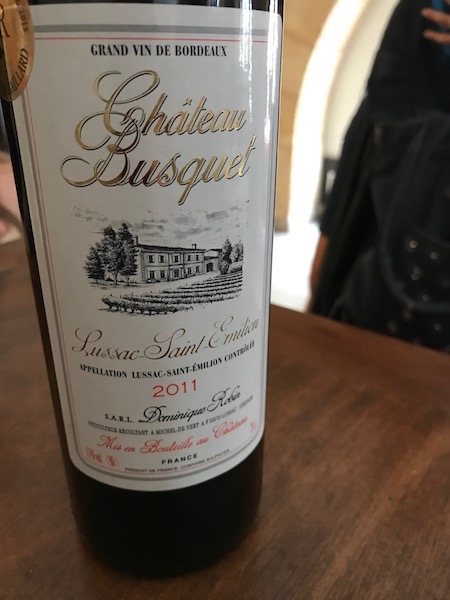

She also brought along a canelé for each of us. A canelé (sometimes spelled with 2 n's) is a small pastry flavored with rum and vanilla , which is a specialty of Bordeaux. It has a soft and tender custard center with a dark, thick caramelized crust. It takes the shape of small, striated cylinder up to five centimeters in height with a depression at the top. The outside of it somewhat looks like the grooves in the columns of temples or buildings like the Grand Theater.
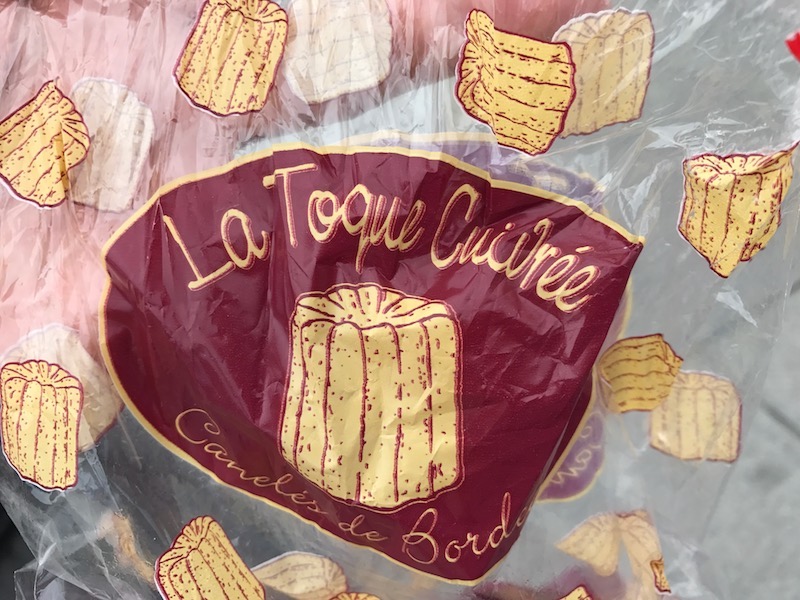
The Pont de pierre, or "Stone Bridge", was the first bridge built over the Garonne River in Bordeaux. While it was designed and planned under orders of Napoleon I, but construction didn't happen until the Bourbon Restoration between 1819 and 1822. It has 17 arches, which correspond to the number of letters in Napoleon Bonaparte's name.
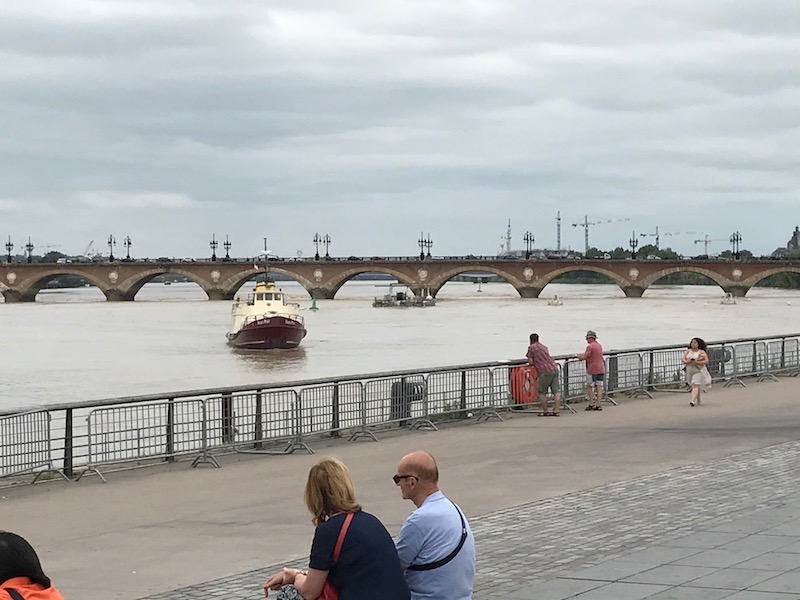
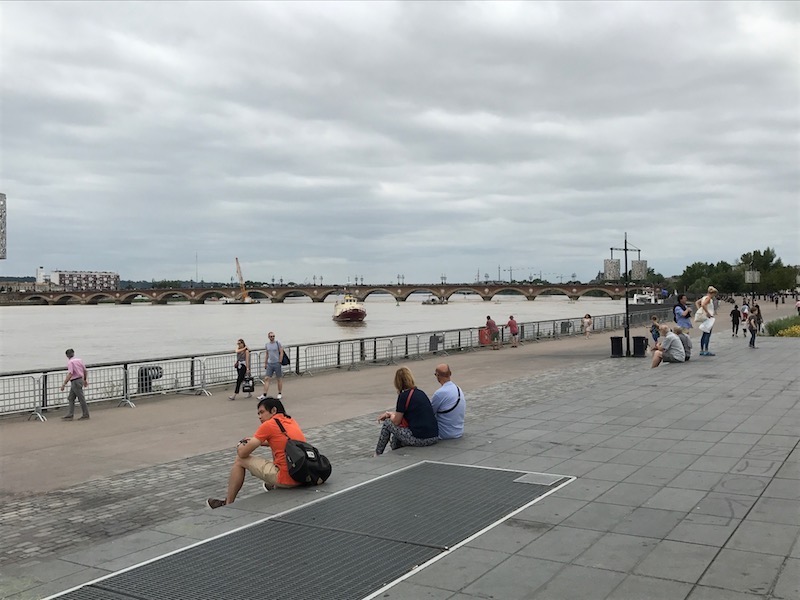
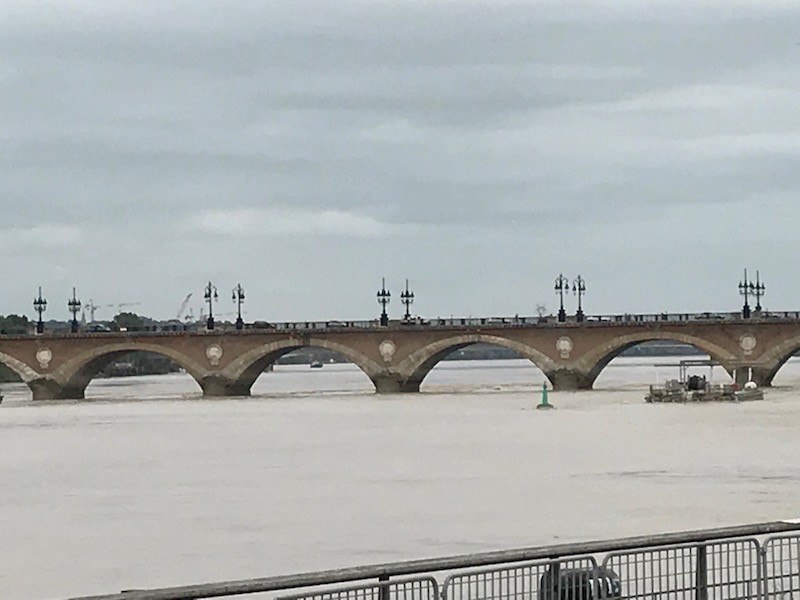
We ended our tour in the section of town called Chartrons and as we made our way back to the hotel, we passed across this lovely church. The Church of Saint-Louis des Chartrons is the work of the architect Charles-Louis Brun. The Neo-Gothic building was built between 1875 and 1879. The facade is divided vertically into three parts: two towers with spires which enclose the central body of the church. Horizontally, there are 4 levels: the porch, the rose window and 4 windows in the towers, the louvres of the bell tower and the crowning gable with the status of St. Louis, and finally the spires.
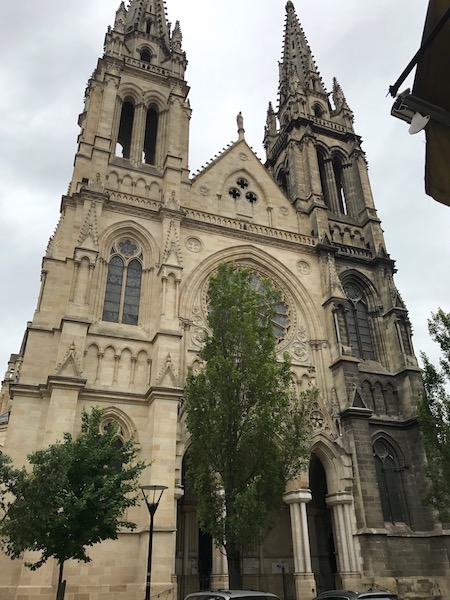

It was a fairly typical French-style church, with high, gothic arches through the nave and side chapels. Around the church they also have the Stations of the Cross.
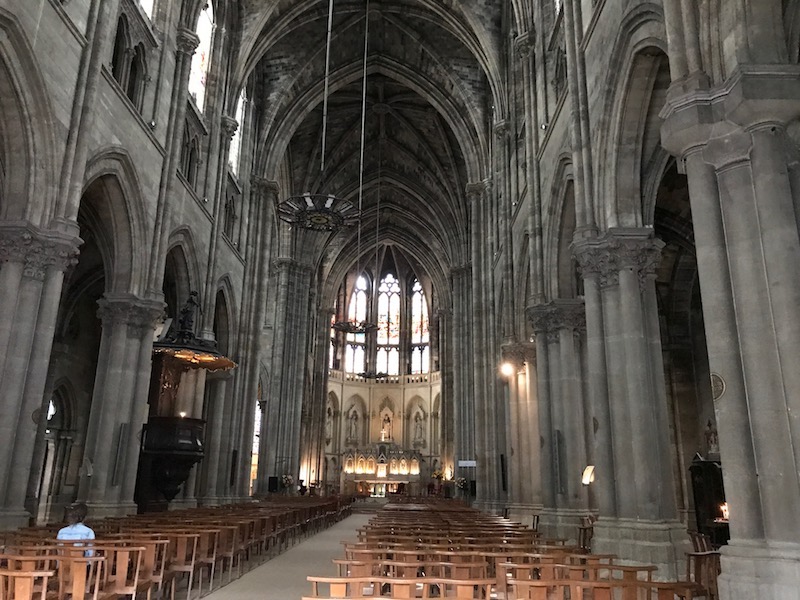
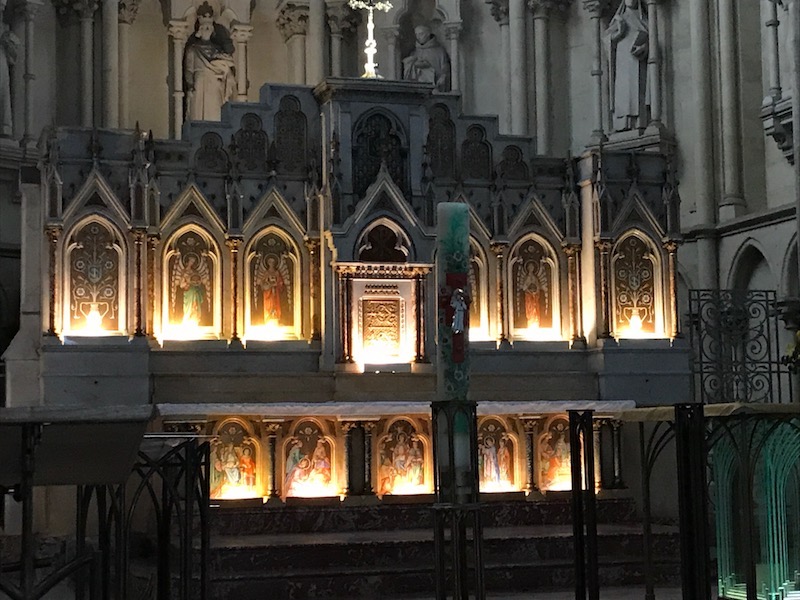
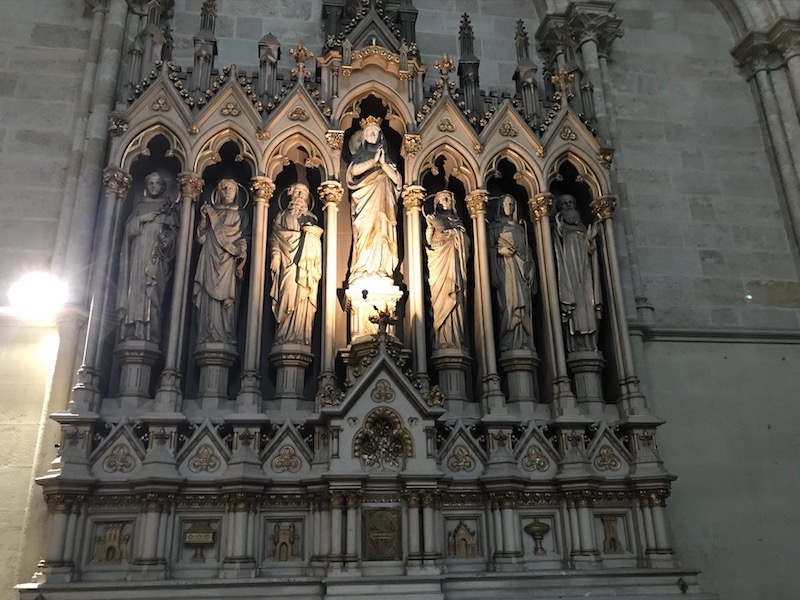

The Stained glass windows date from 1879 or 1899, depending on the window.
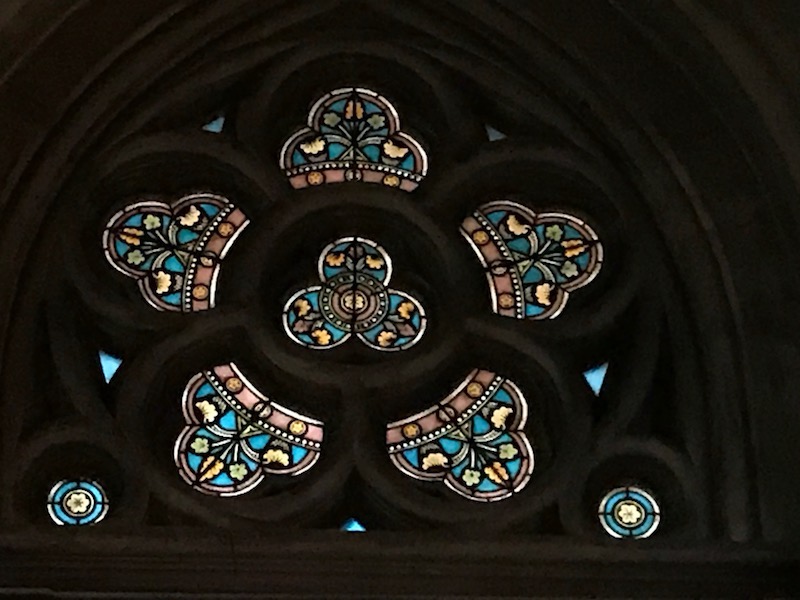


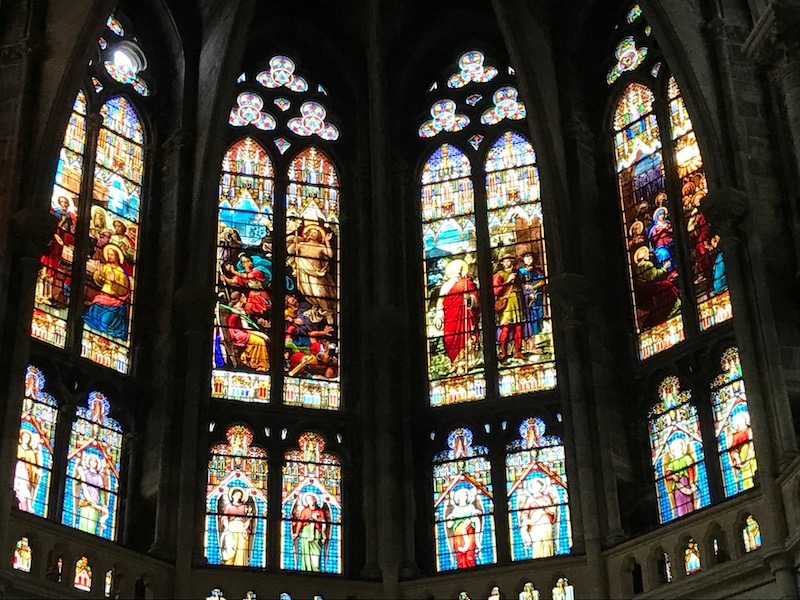
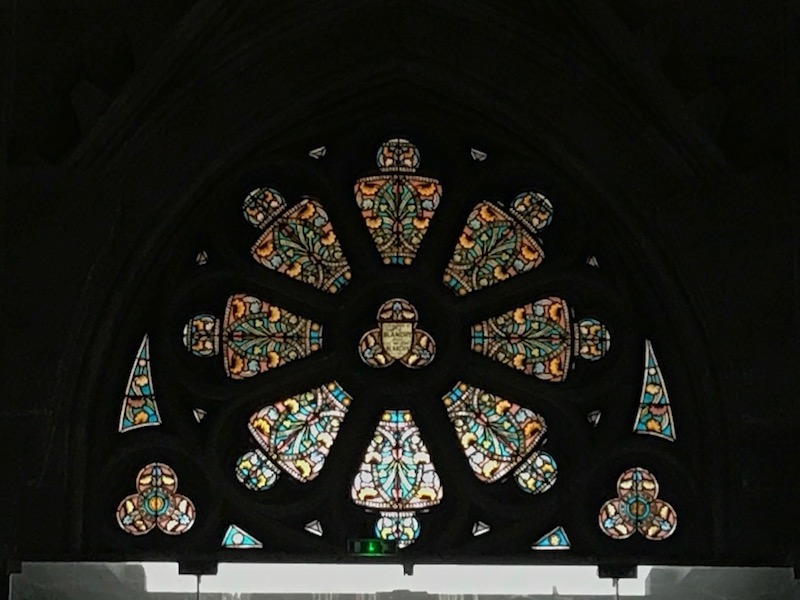
As with it seems every church in France, there is a memorial to those from that parish who lost their lives in World War I.
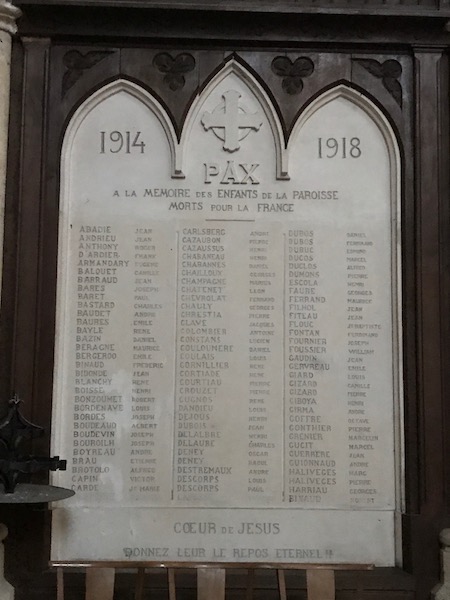
Seems there are lots of monuments to Jeanne d'Arc (Joan of Arc) around France. We have one almost exactly like this in Toulouse a block or so from our apartment. This one was approved in 1913 but it took until 1949/1950 before it was finished and placed in Bordeaux.
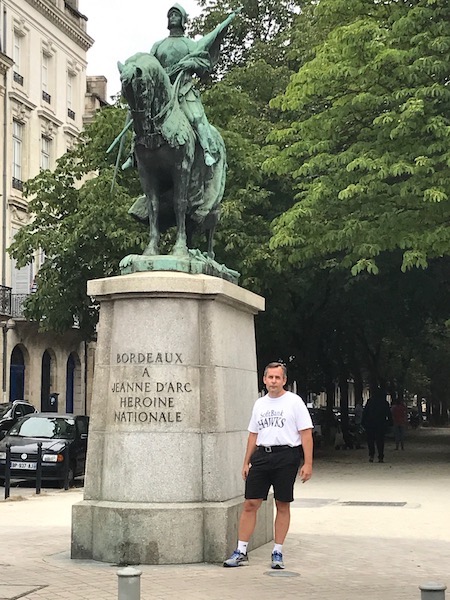
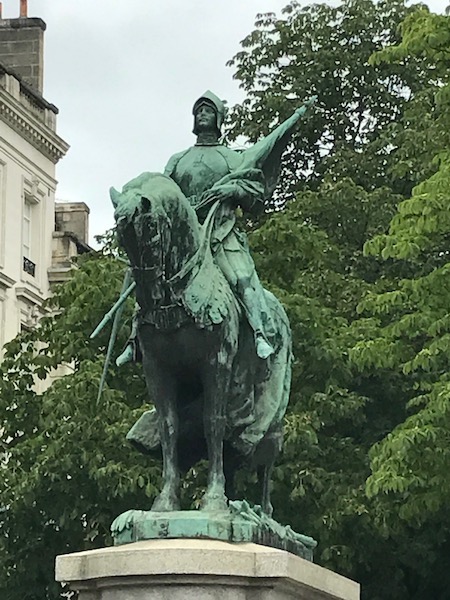
Our dinner was at a restaurant called Le Chien de Pavlov. We did a full 3-course meal along with a lovely bottle of red wine from nearby Saint-Emilion.
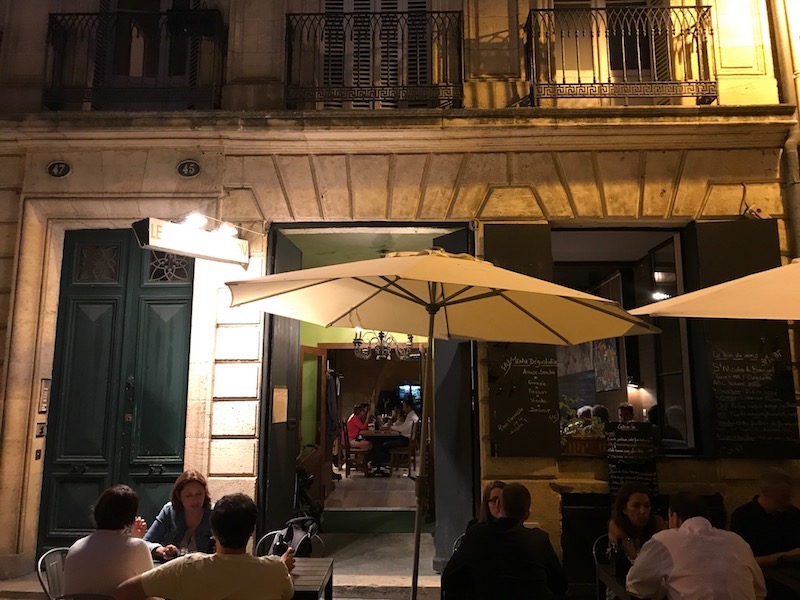



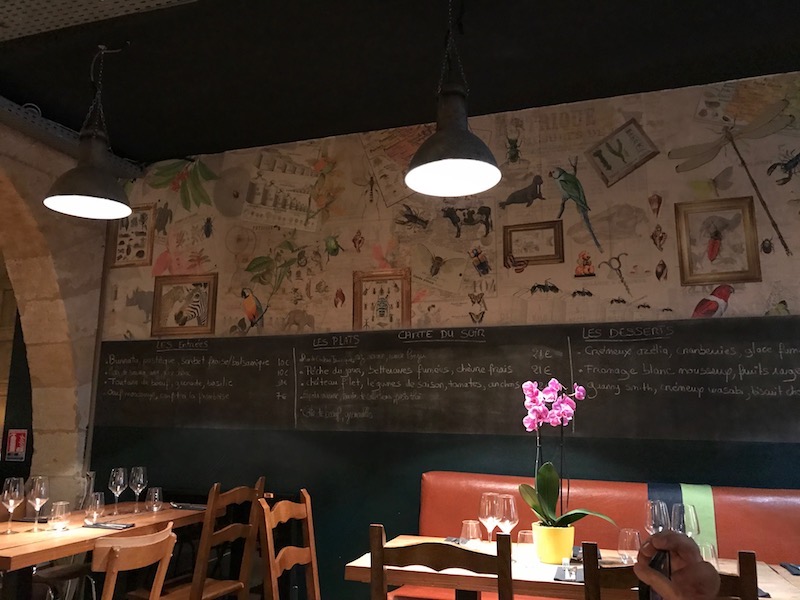
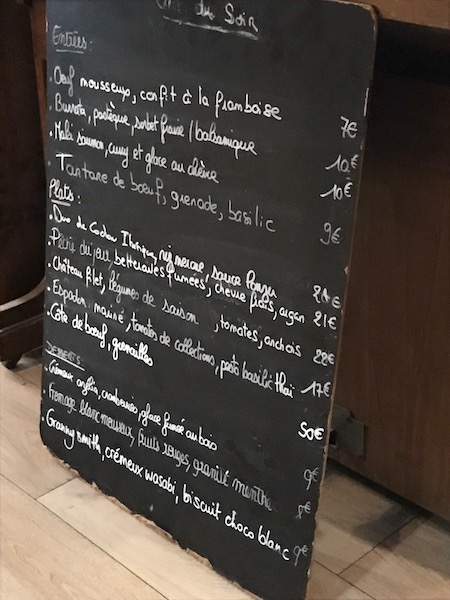

We decided for a tasting menu which included 4 courses and an amuse-bouche. The amuse bouche, which was also on the menu as an entree, was "oeuf mousse, confit a la framboise", which ended up being a fluffy mouse with several interesting flavors and textures underneath, which totally looks like an egg.
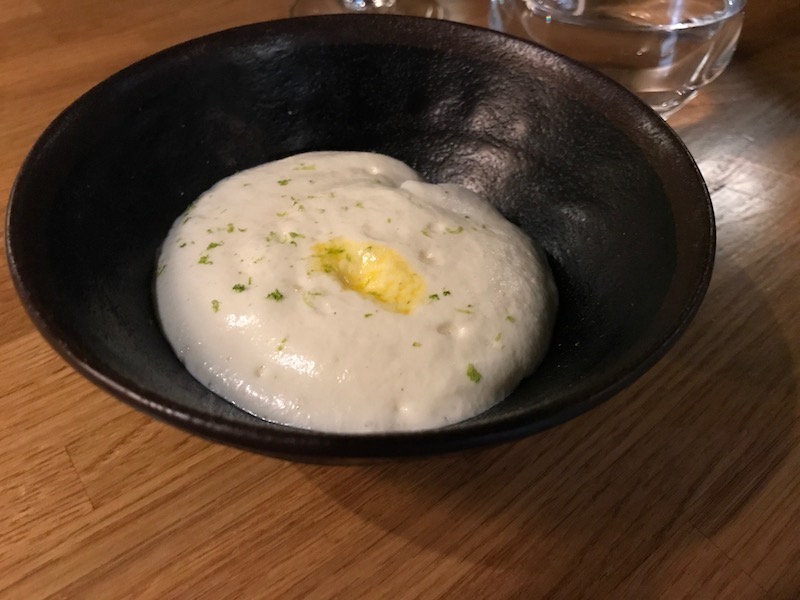
The appetizer (entree in French) was steak tartare, which we've had before but is really not our favorite in general. Both of us agreed that this was actually pretty good! Normally, I find steak tartare to have a somewhat "metal" flavor, but this one didn't. It had little white tuffs of a basil cream and pomegranate seeds along with some dill and purple cabbage on top.

The fish course was a piece of cod with smoked beets with a beet puree, fresh goat cheese, and a couple other things that were good but we have really no idea what they were.
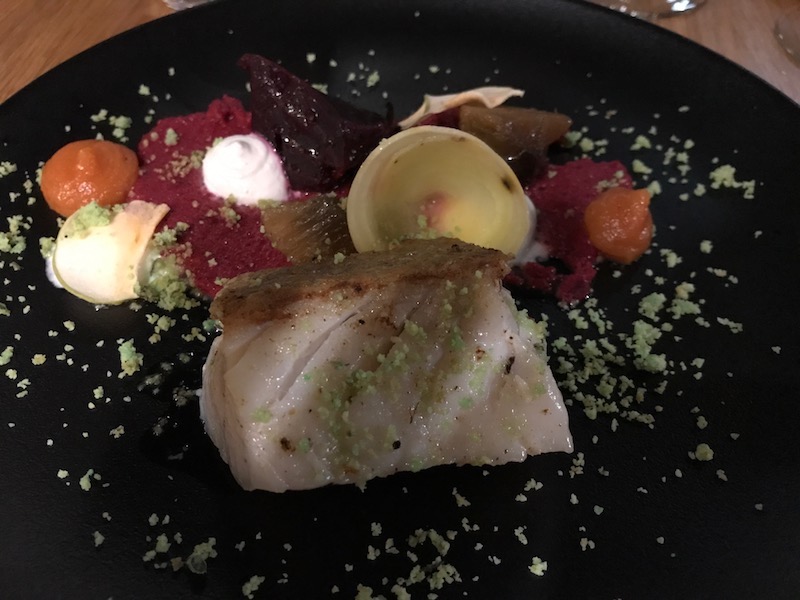
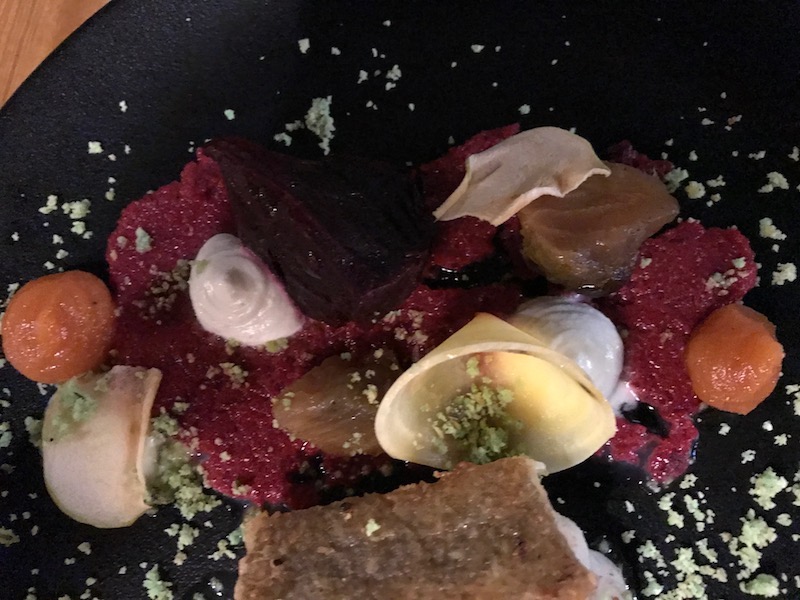
The meat course was a duo of pork, one being something that seemed like pork belly. It came with a Japanese Ponzu sauce as well as black rice. The only part of this that I really didn't like that much was the pork belly, which I find always has too much fat in it. I like the flavor of the fat if it is marbled within the meat, but just a 1 inch layer of fat isn't that appealing for me.
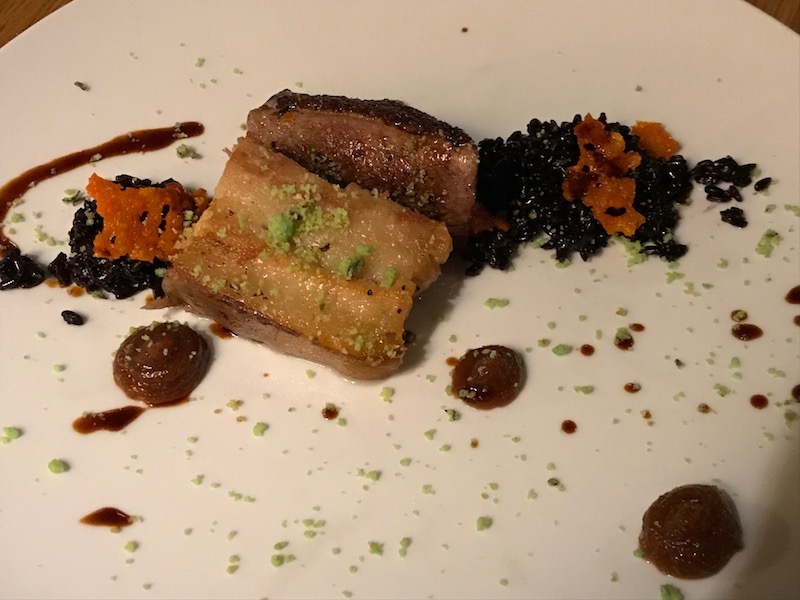
Lastly, the dessert, which was Granny Smith apples sliced with a wasabi cream and white chocolate cookie crumble, topped with a fresh sorbet and ribbons of mint.

We then headed over towards the river to get some pictures at night. These first are the Place de la Bourse and the Mirror d'Eau (mirror of water, that I'll get to more on Sunday).
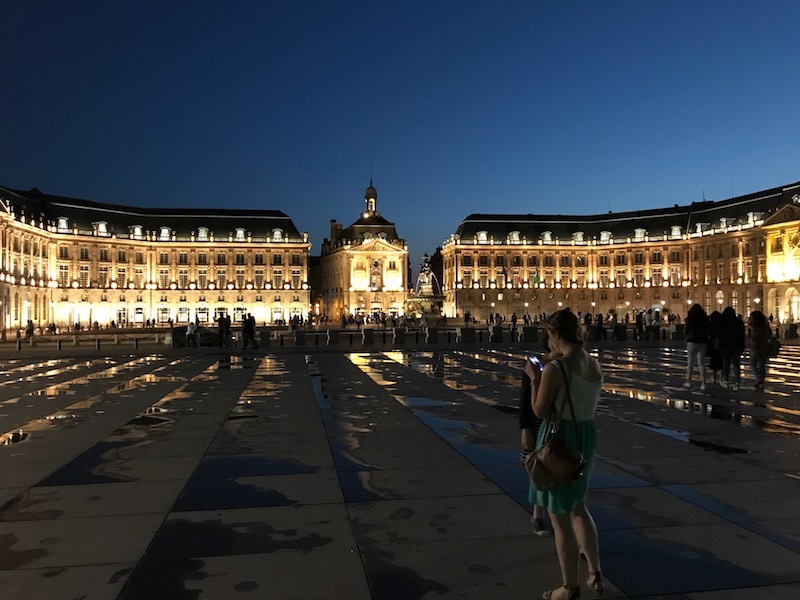
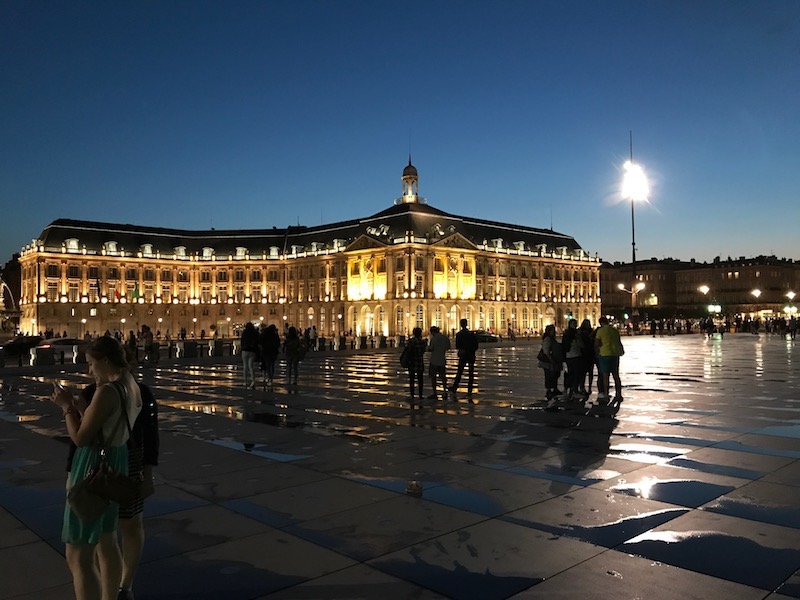

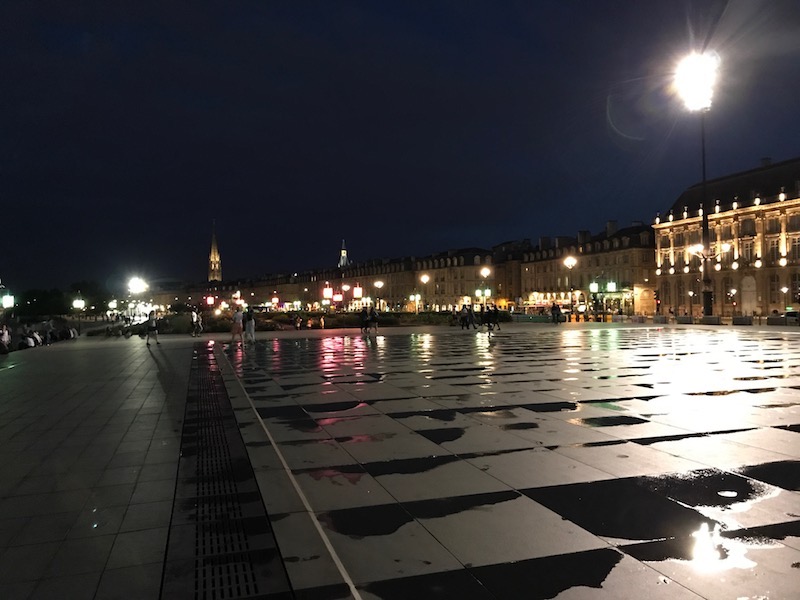
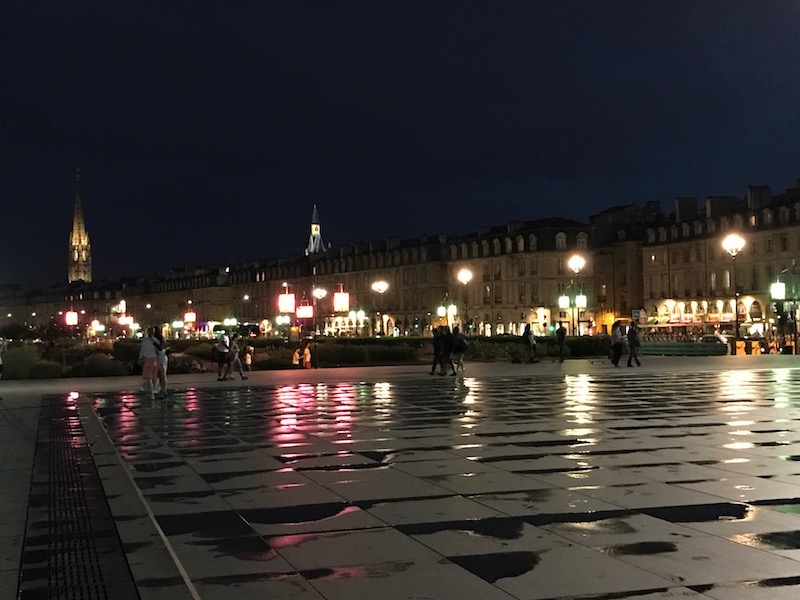
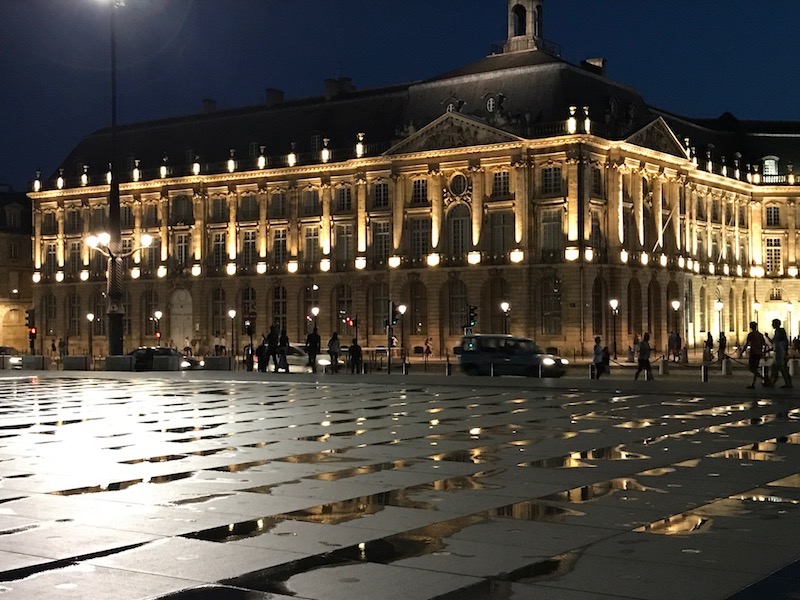

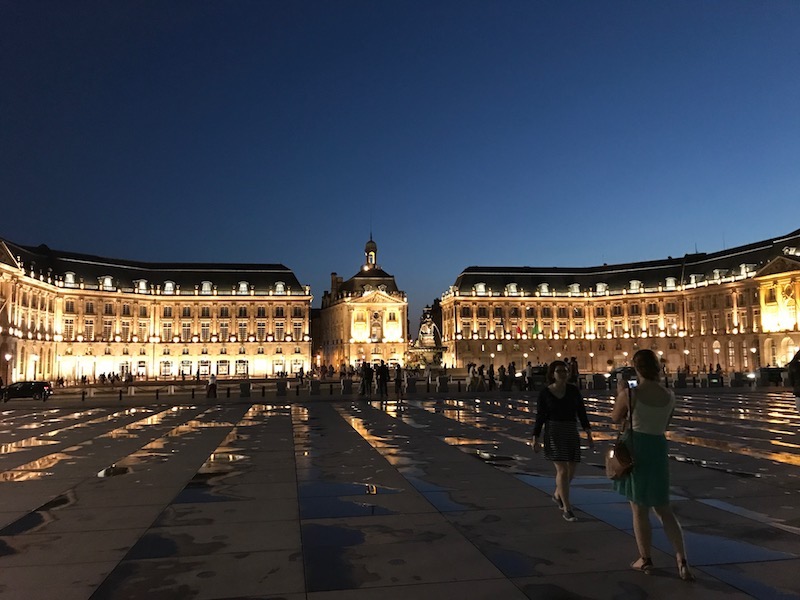
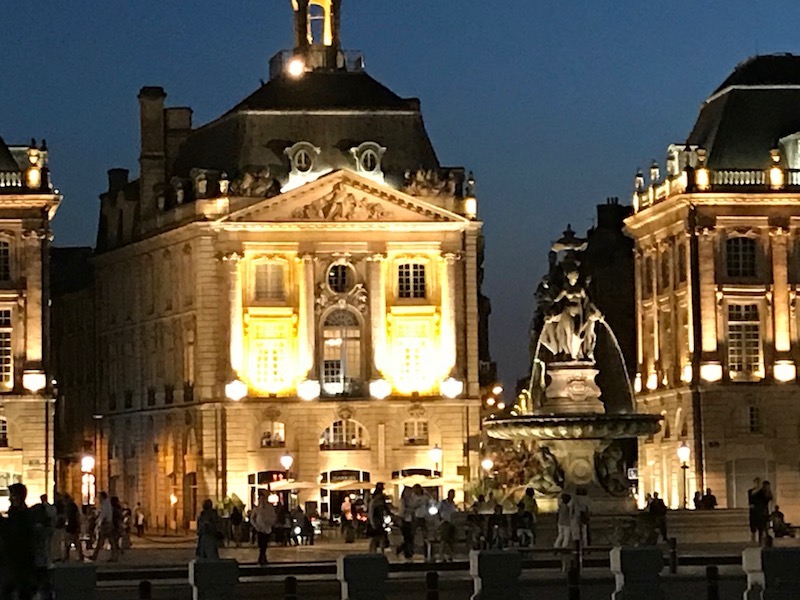
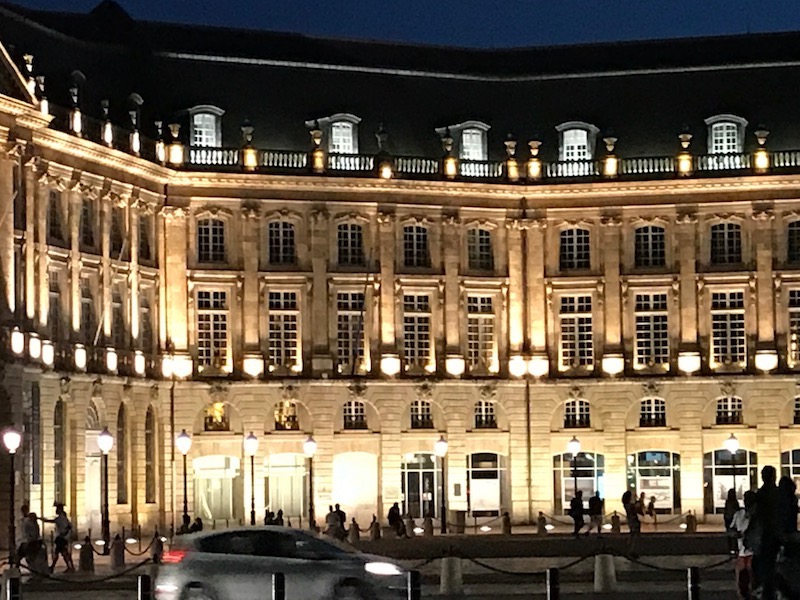
And then Place de la Comedie and the Grand Theater, with the grand columns and statues on top.


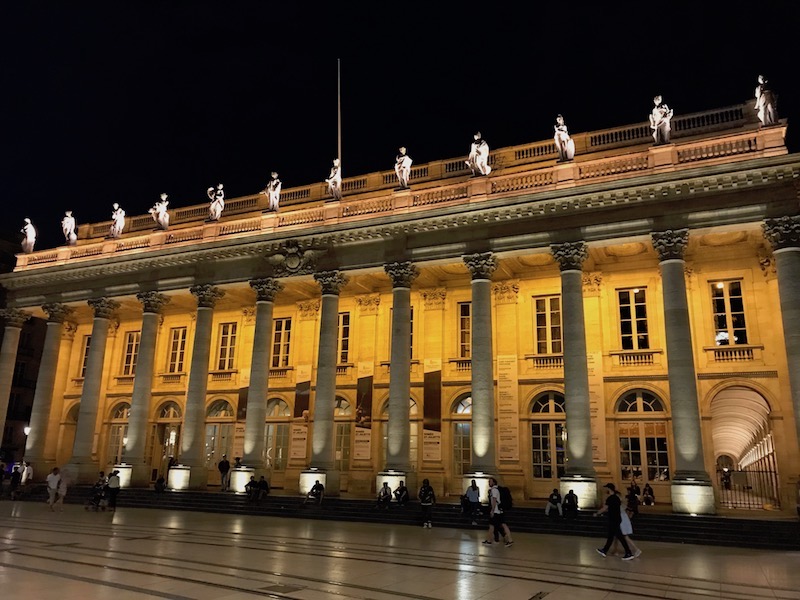
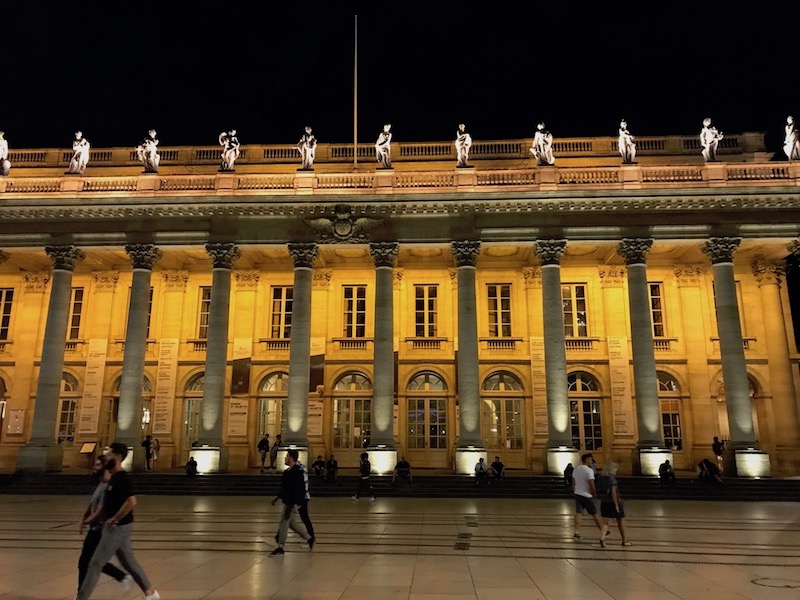
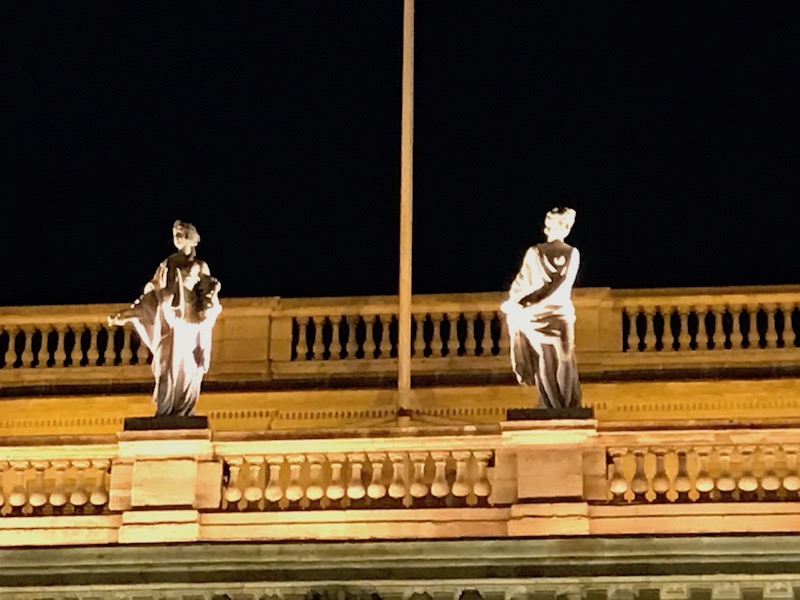
On the river-side, where the Mirror d'eau is, there is also a great little park, which at night is softly lit by these lamps.
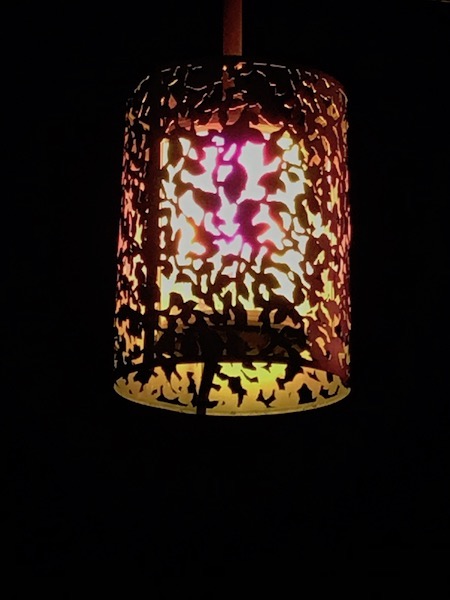


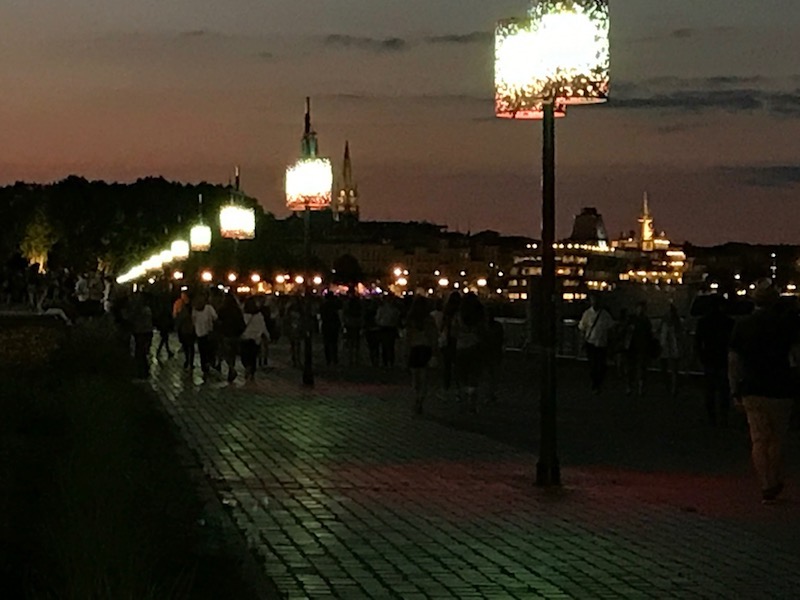
Across the river, the blue building is a bank (Banque Populaire) and to the right is what used to be the Bastide Gare of Bordeaux, which has been renovated as a huge cineplex.
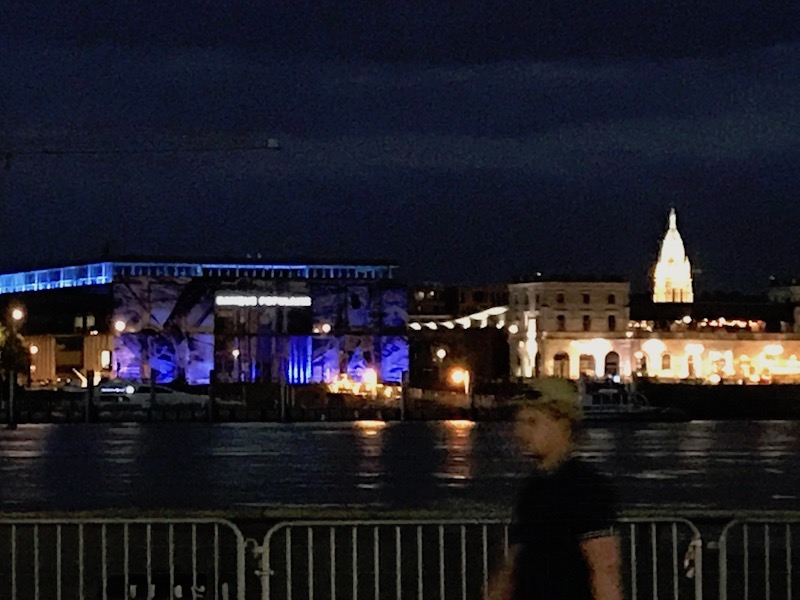

You can now